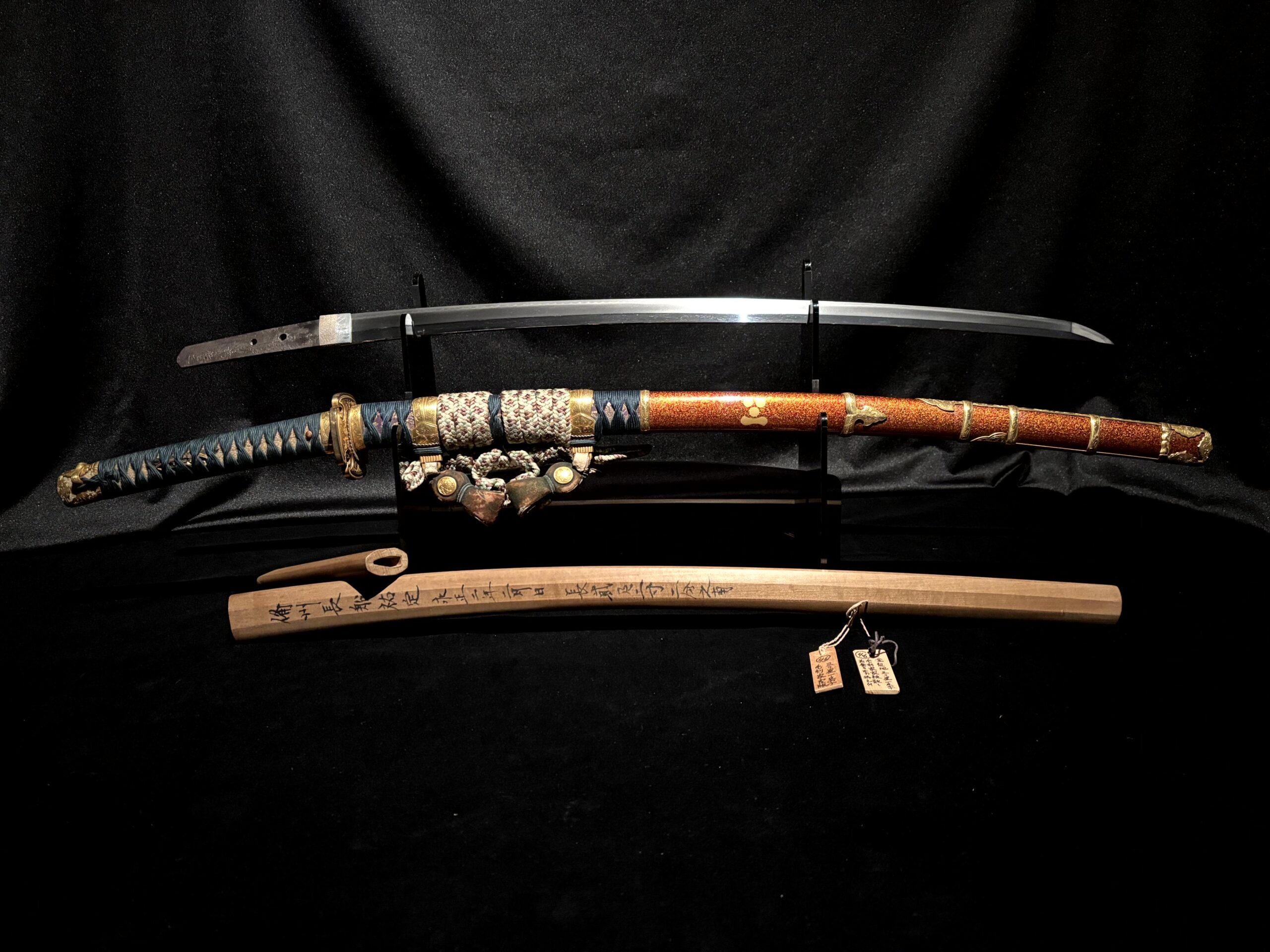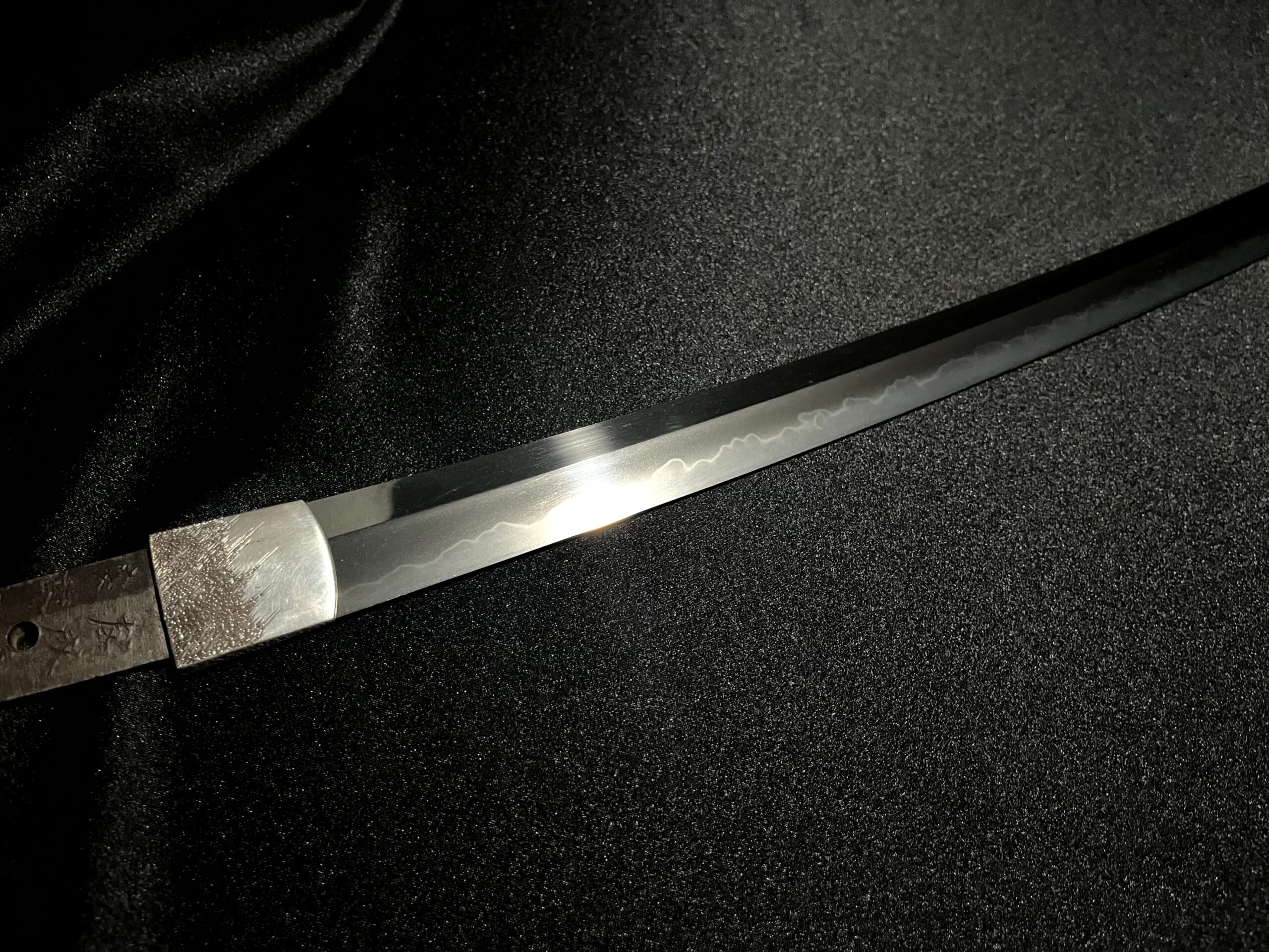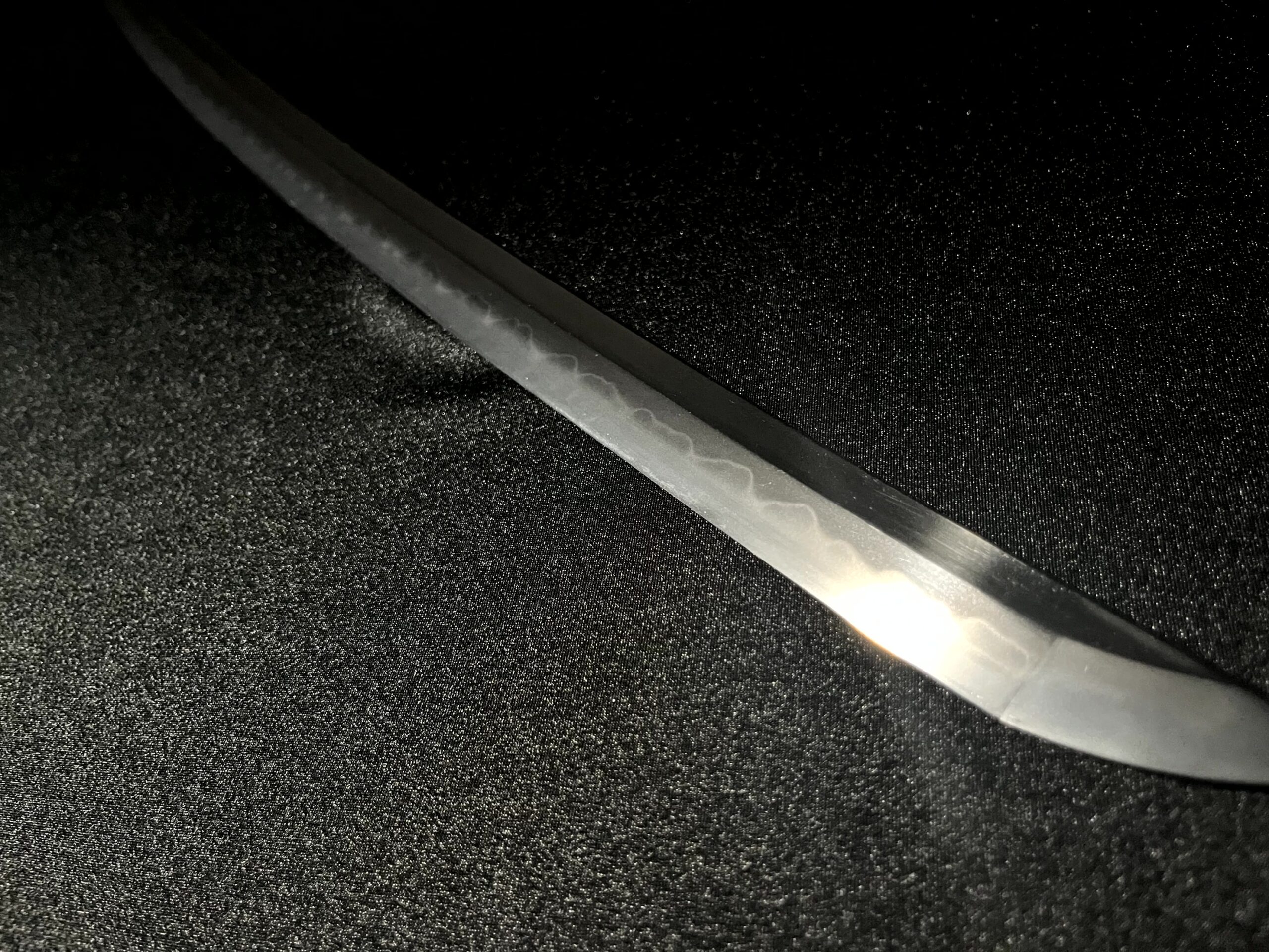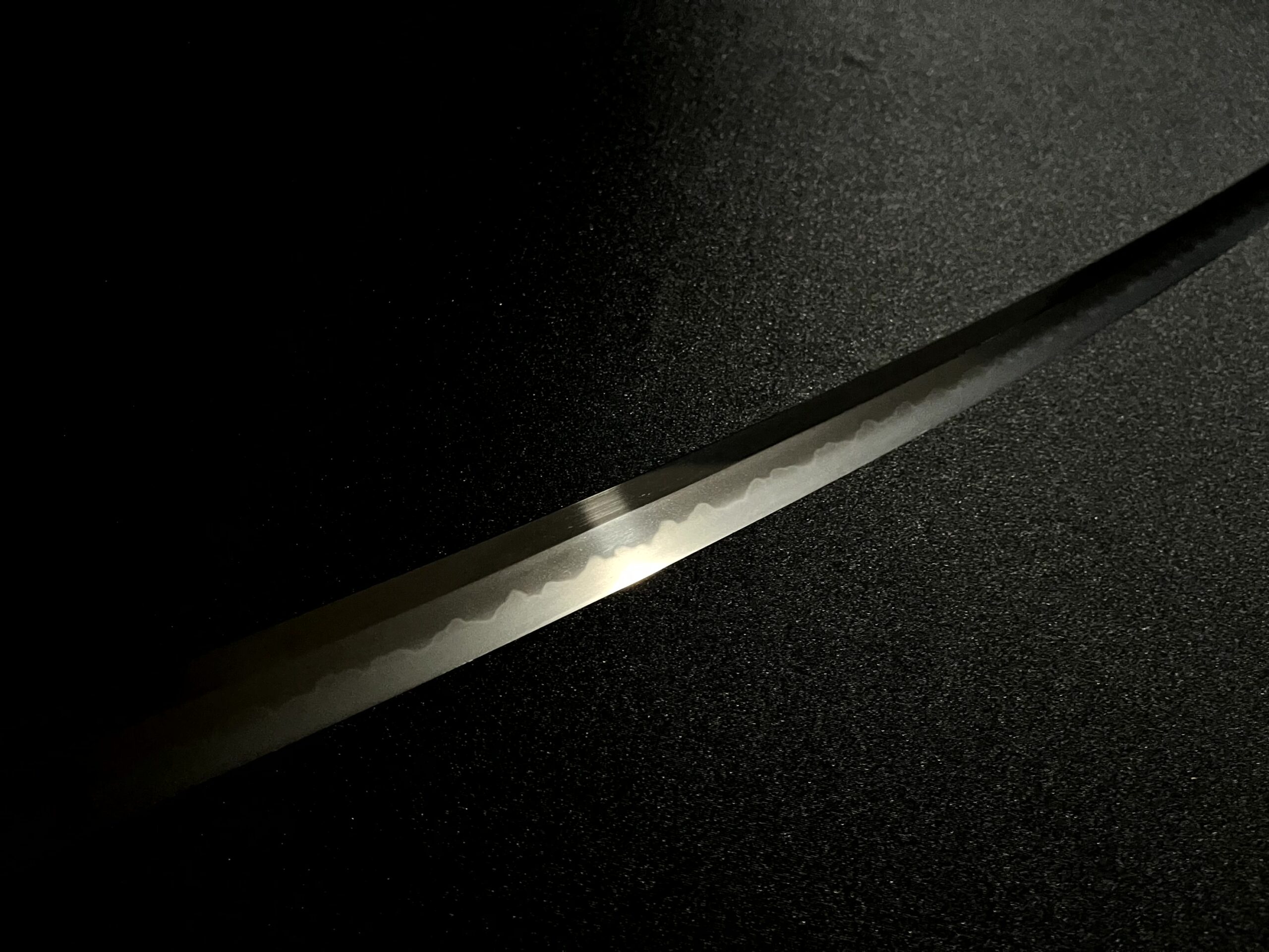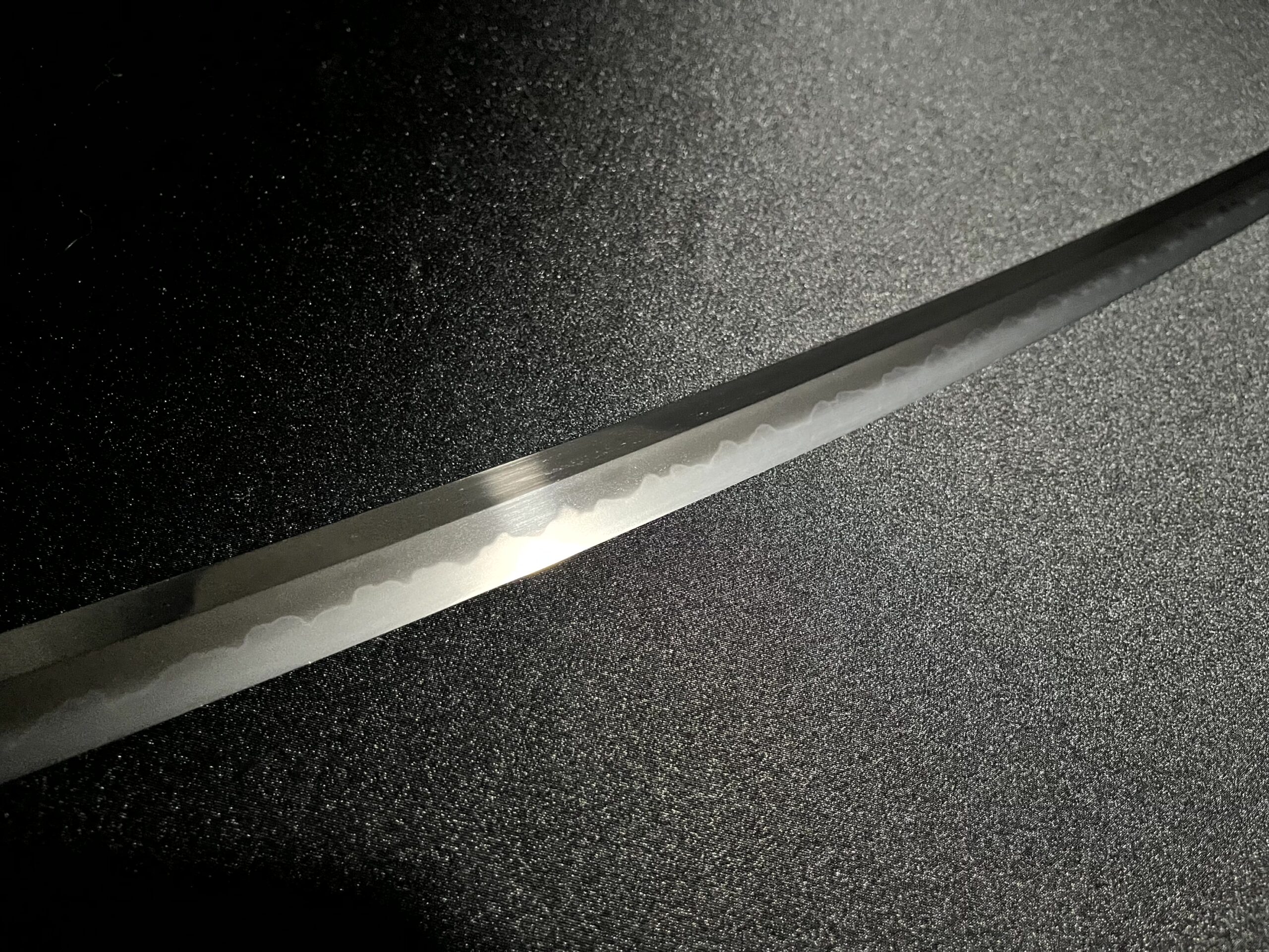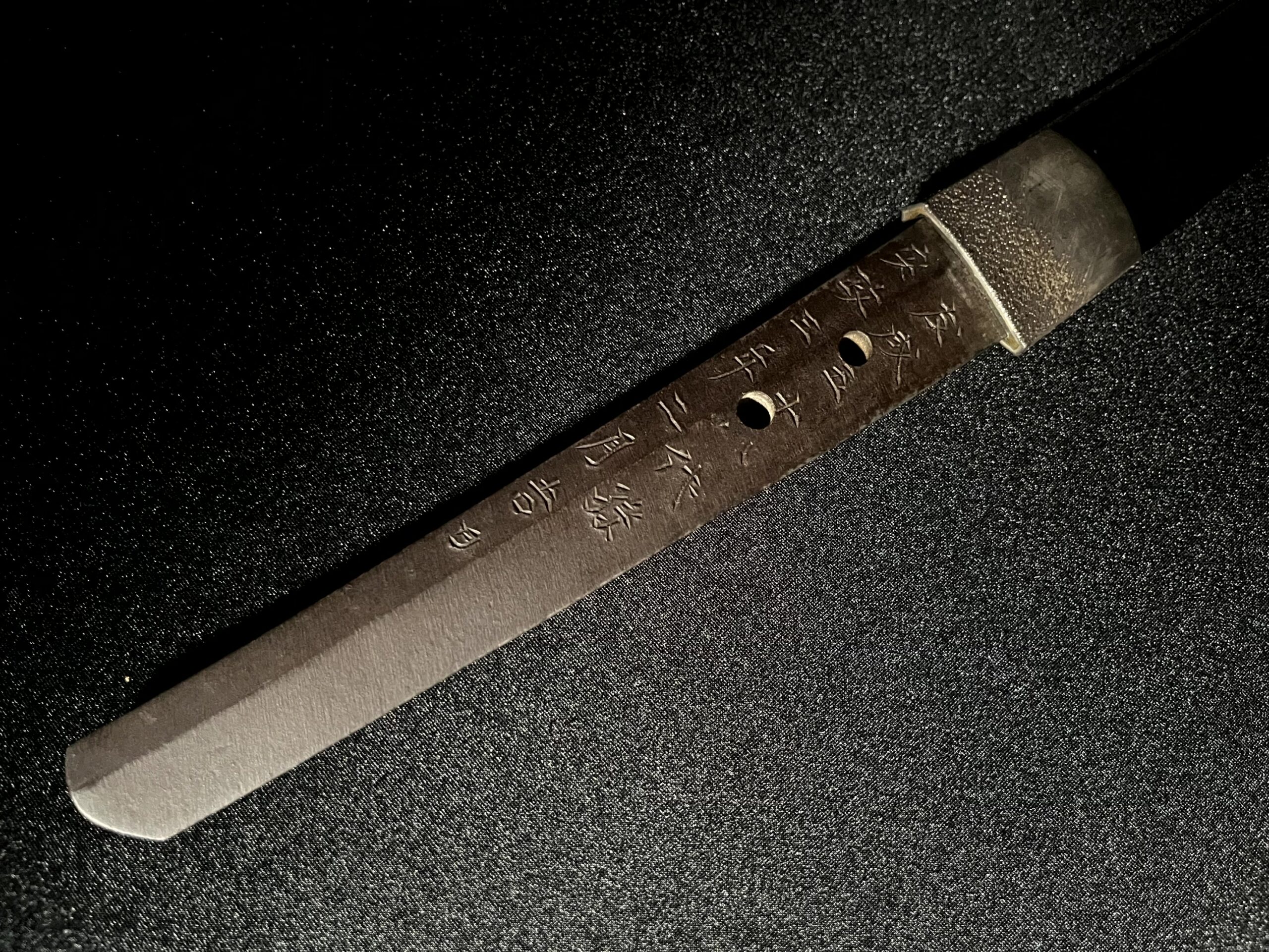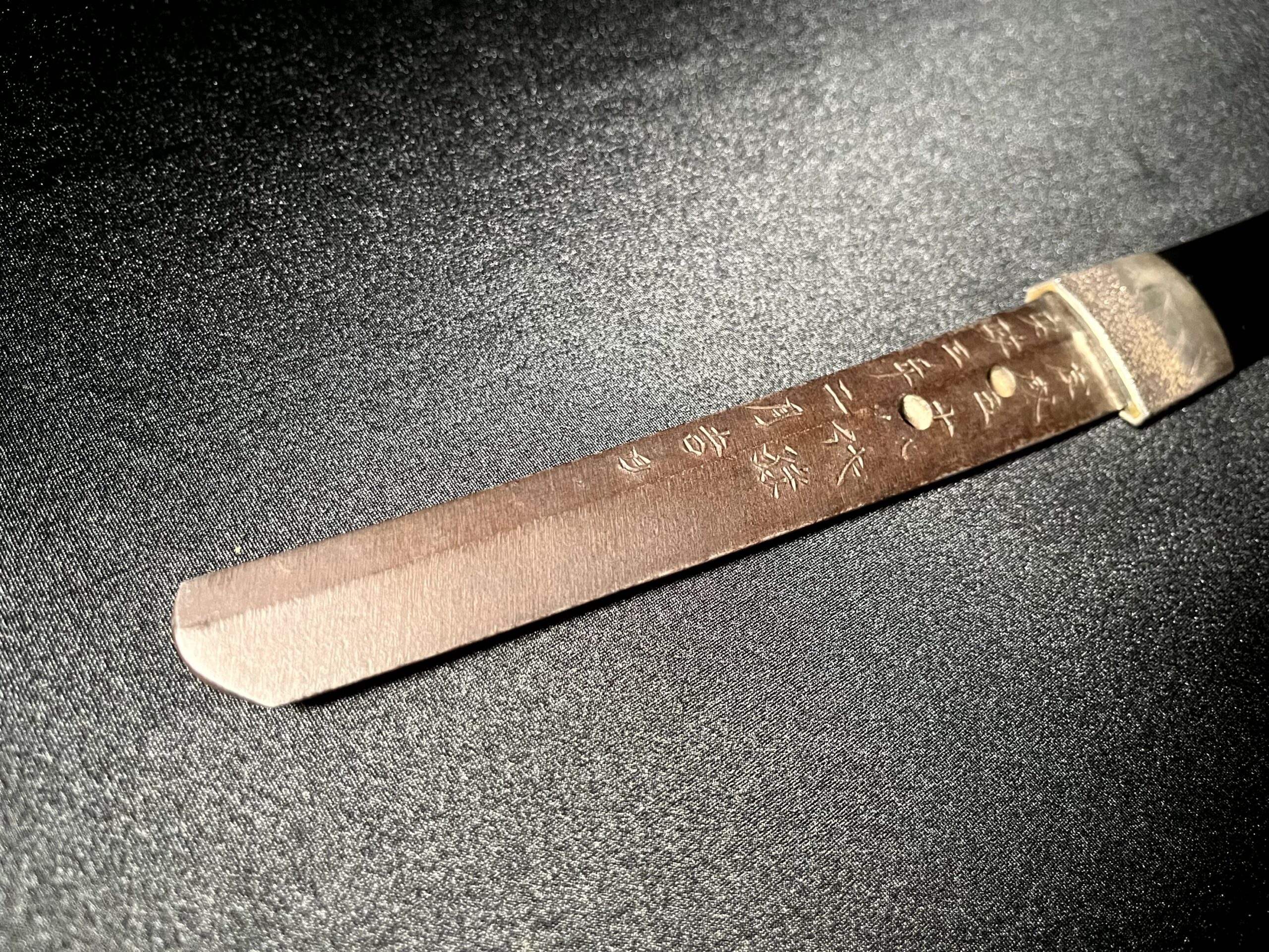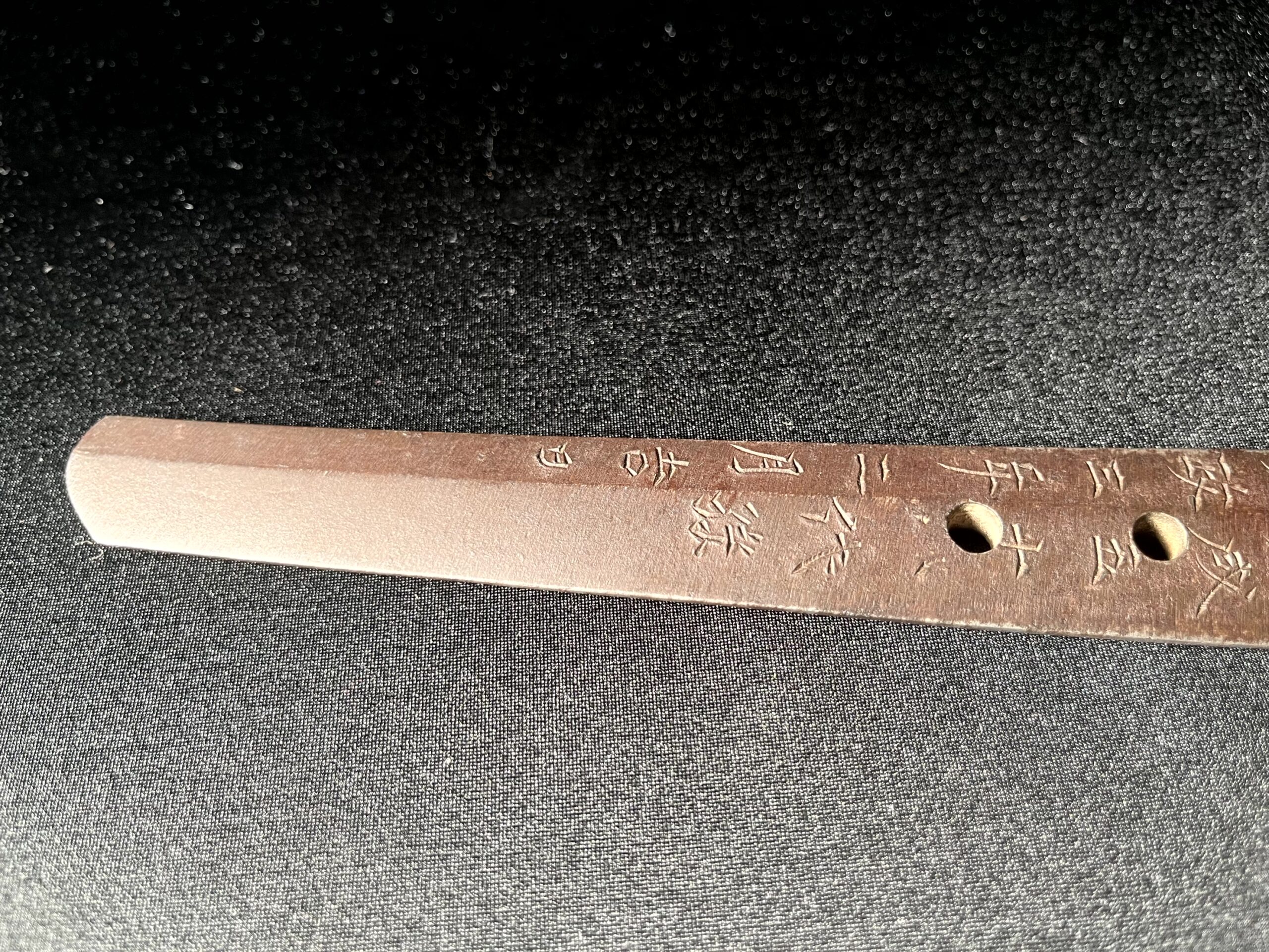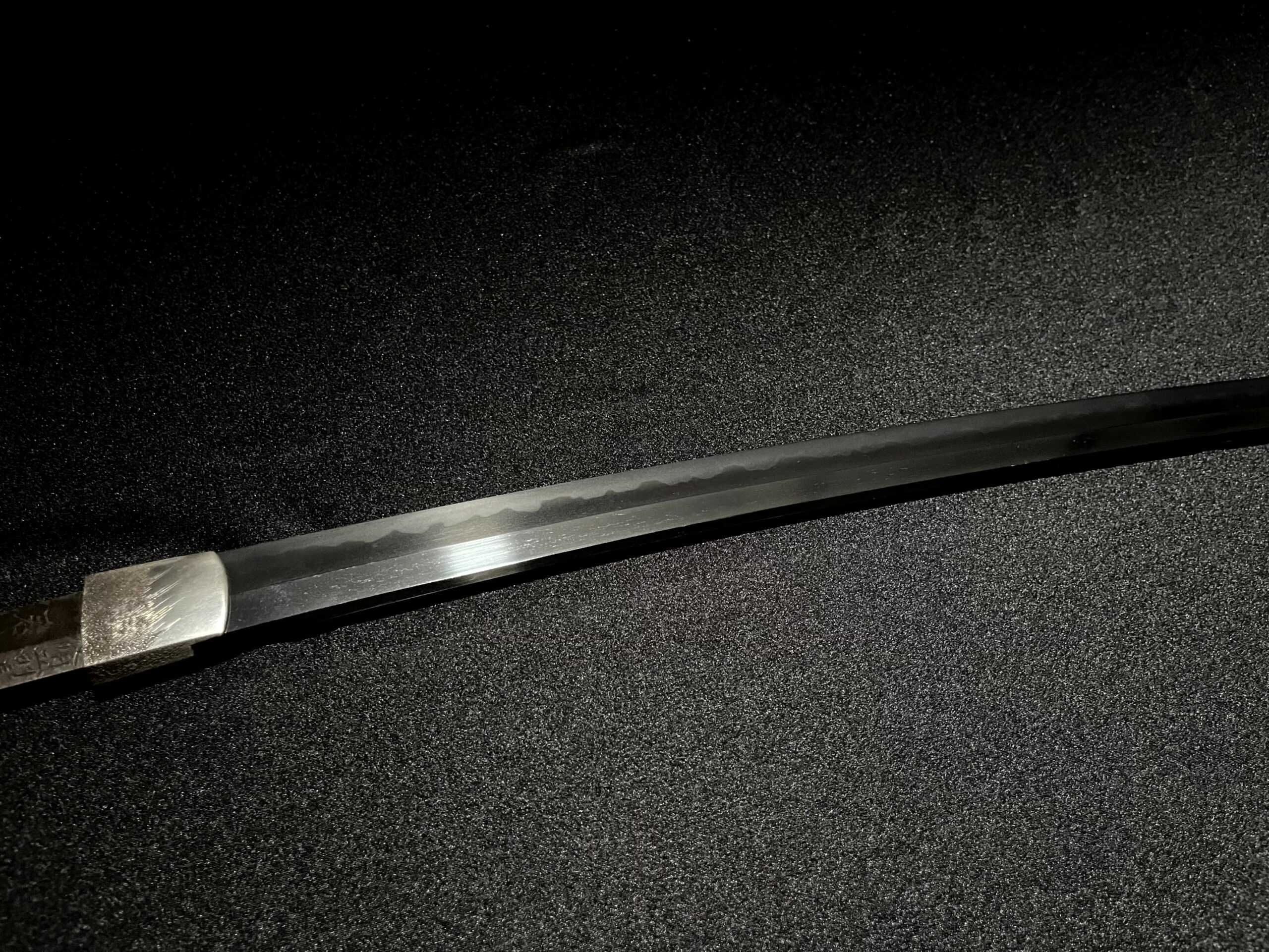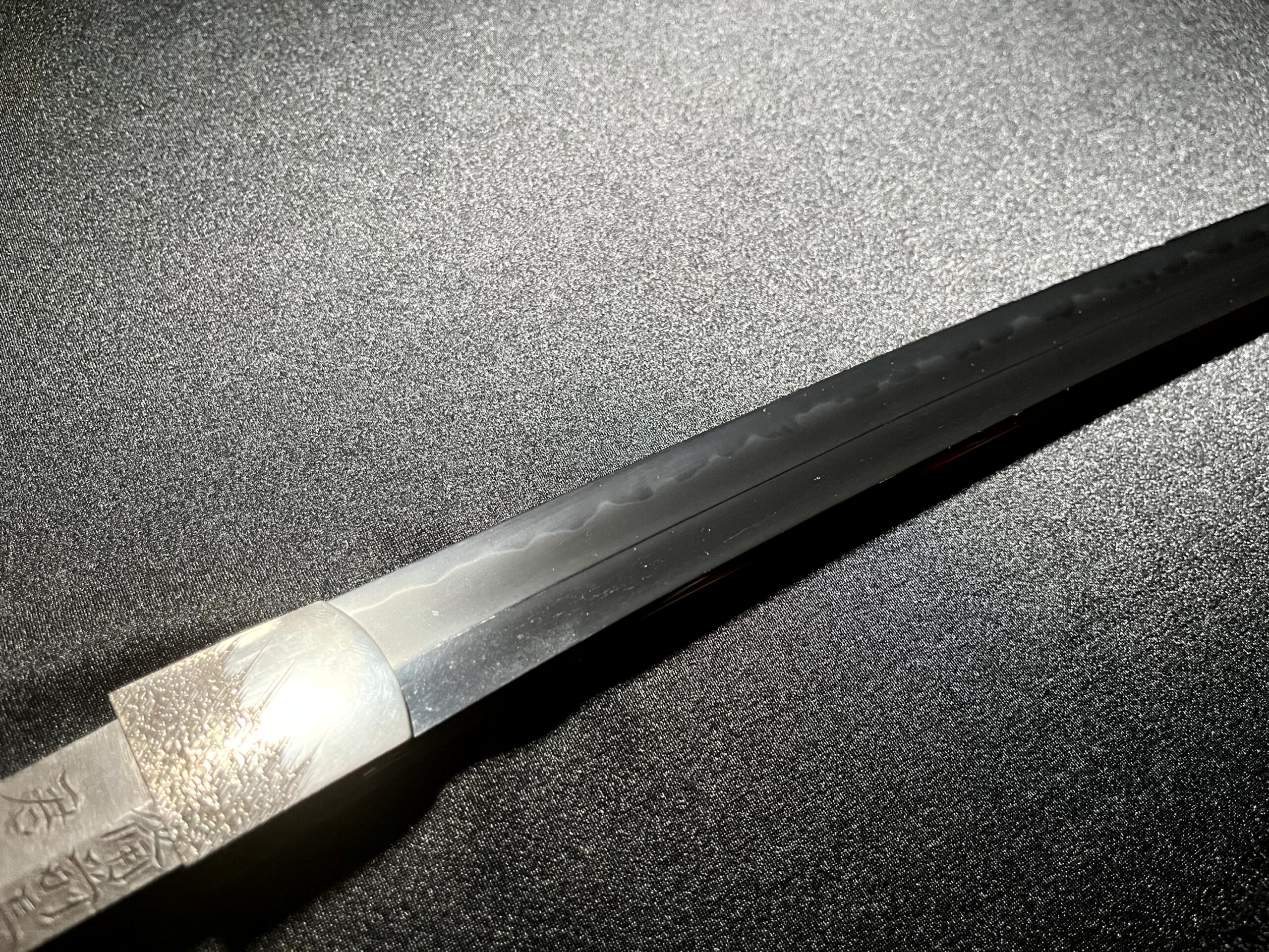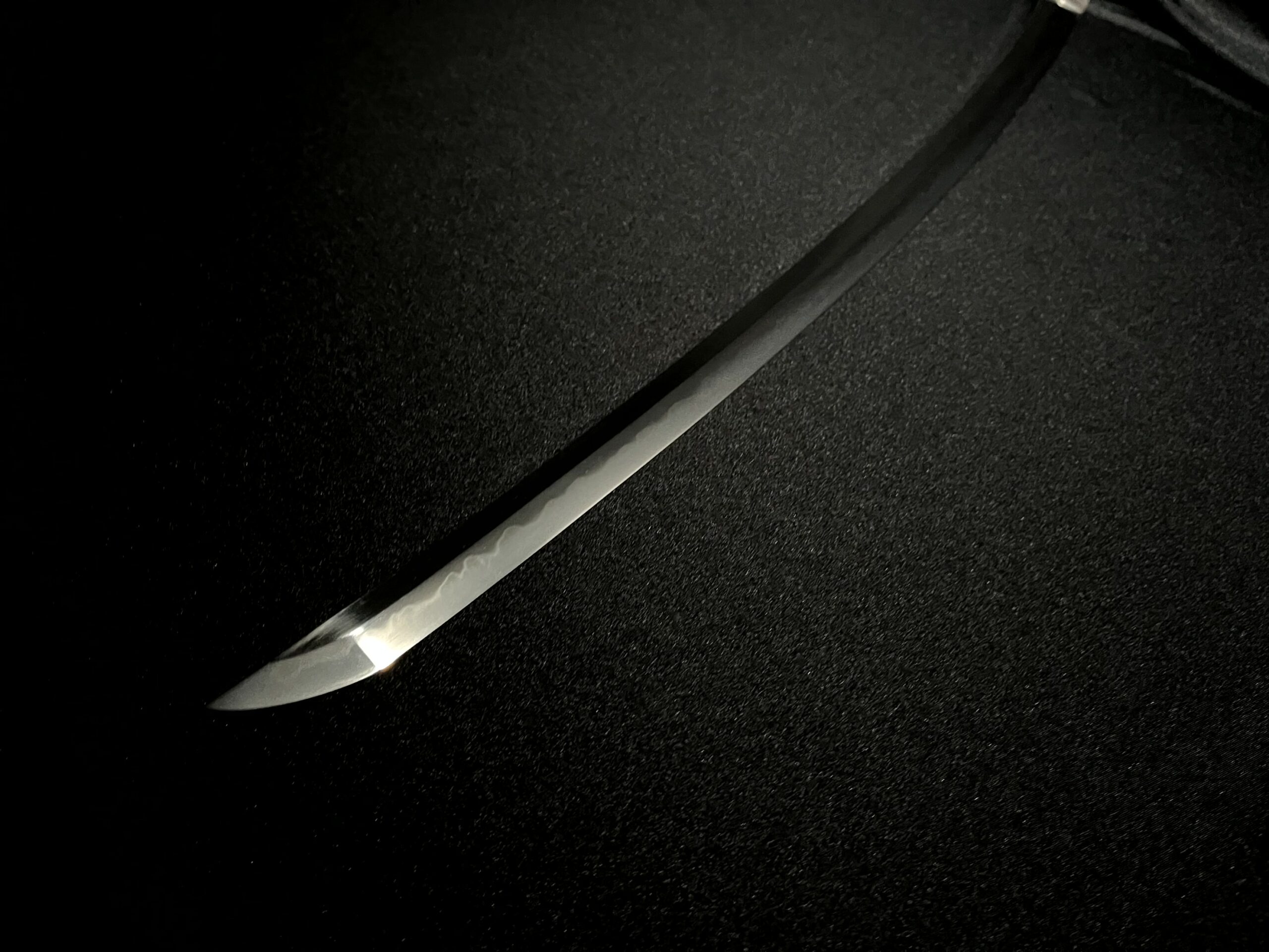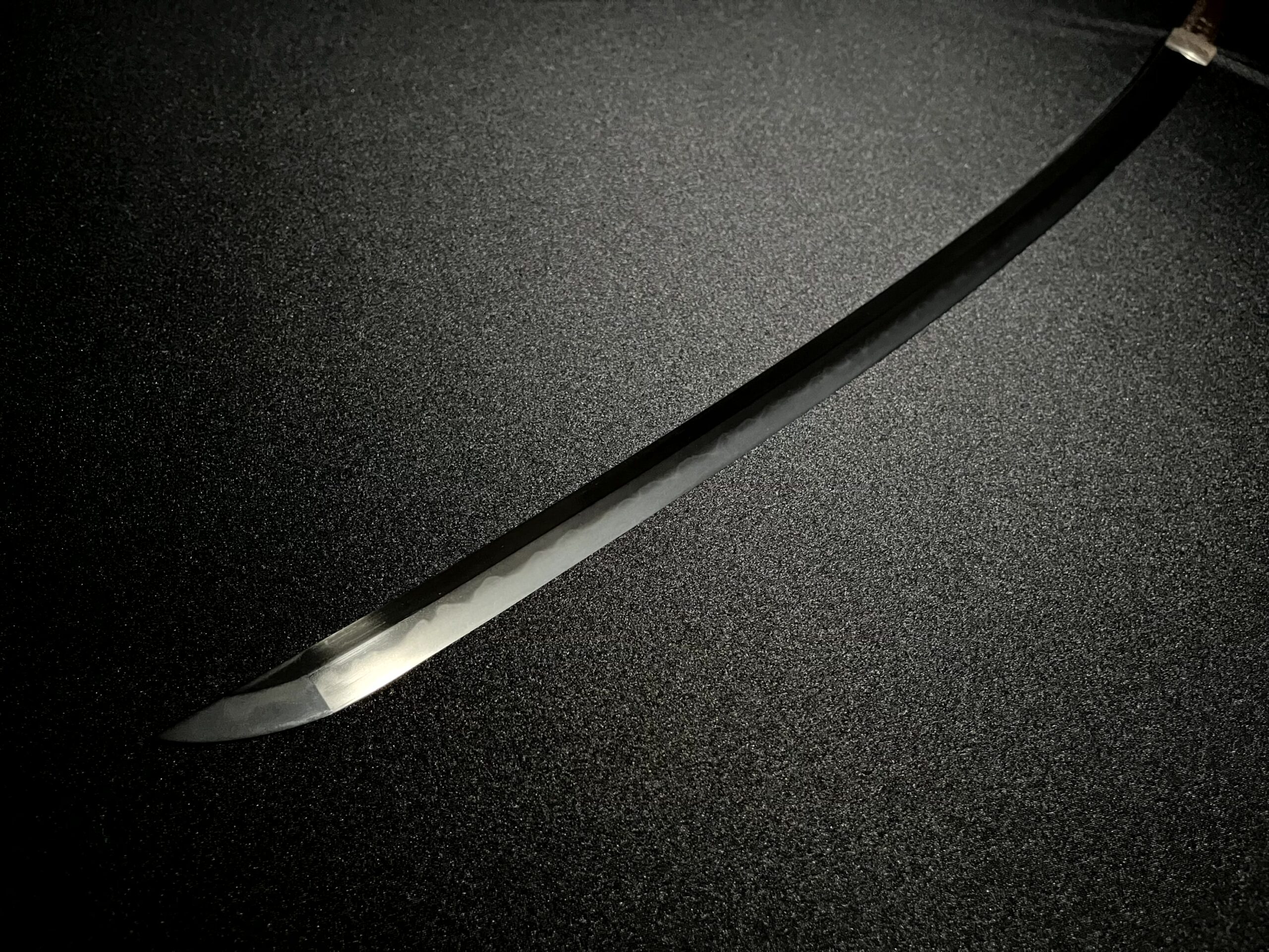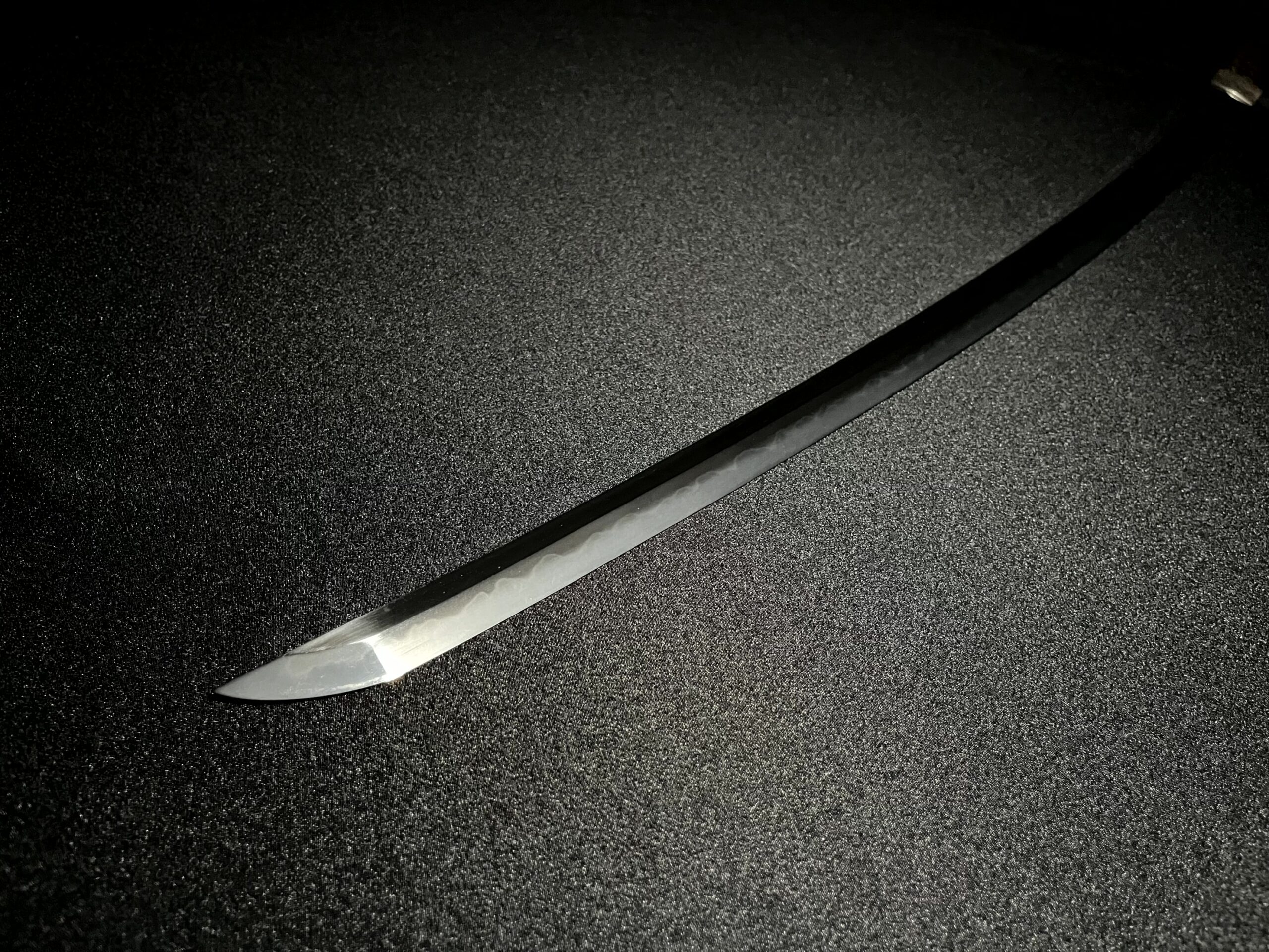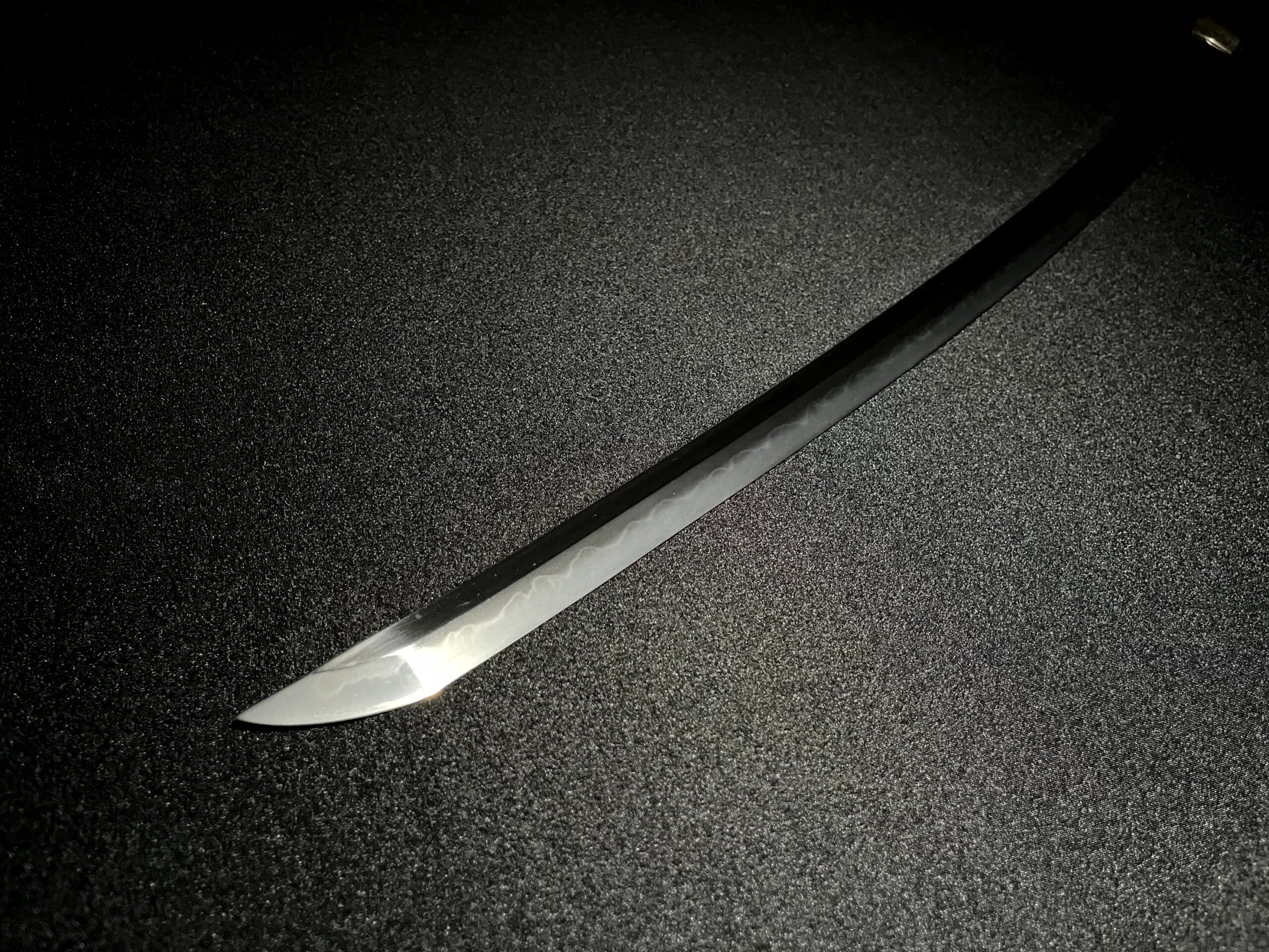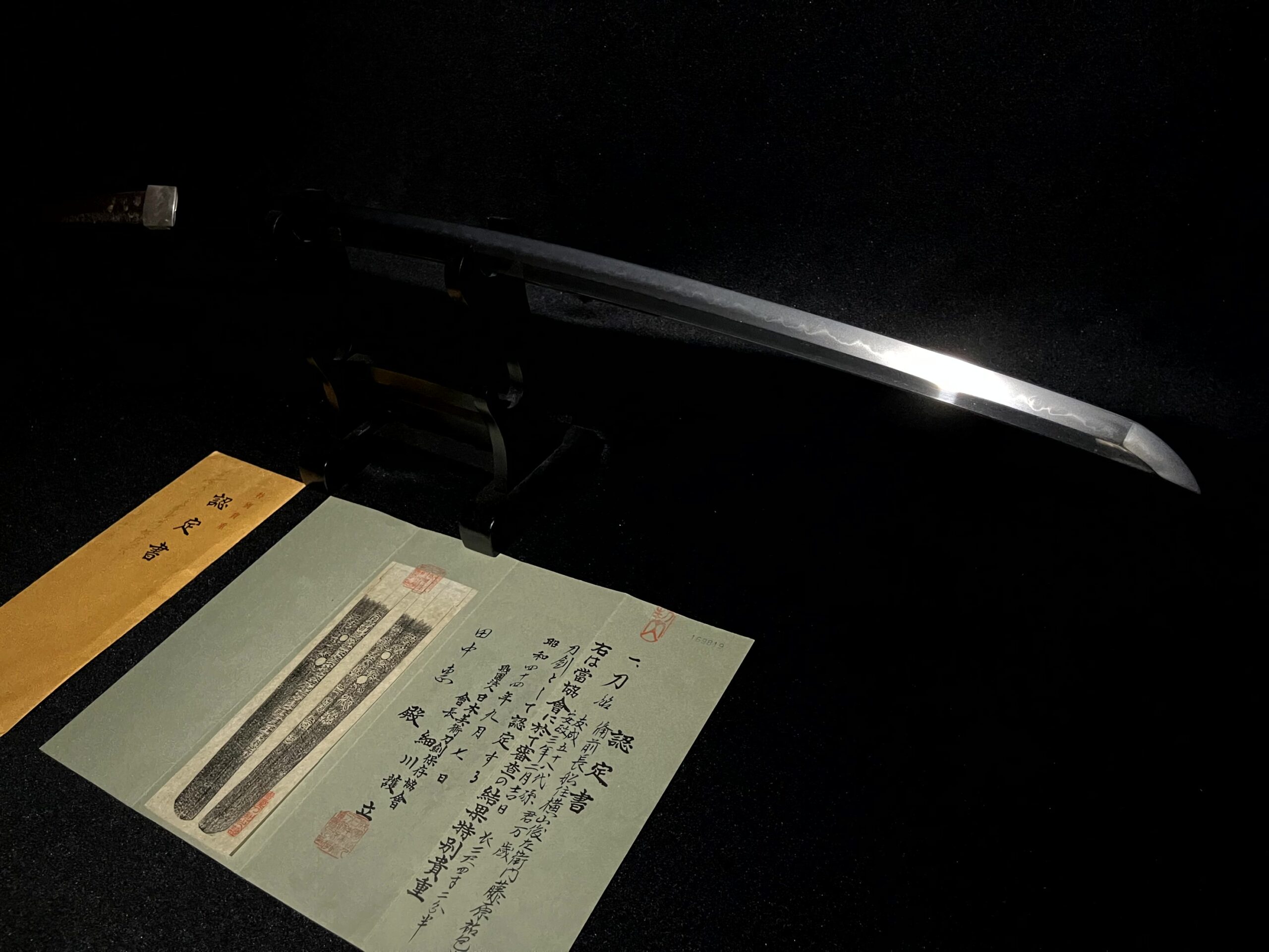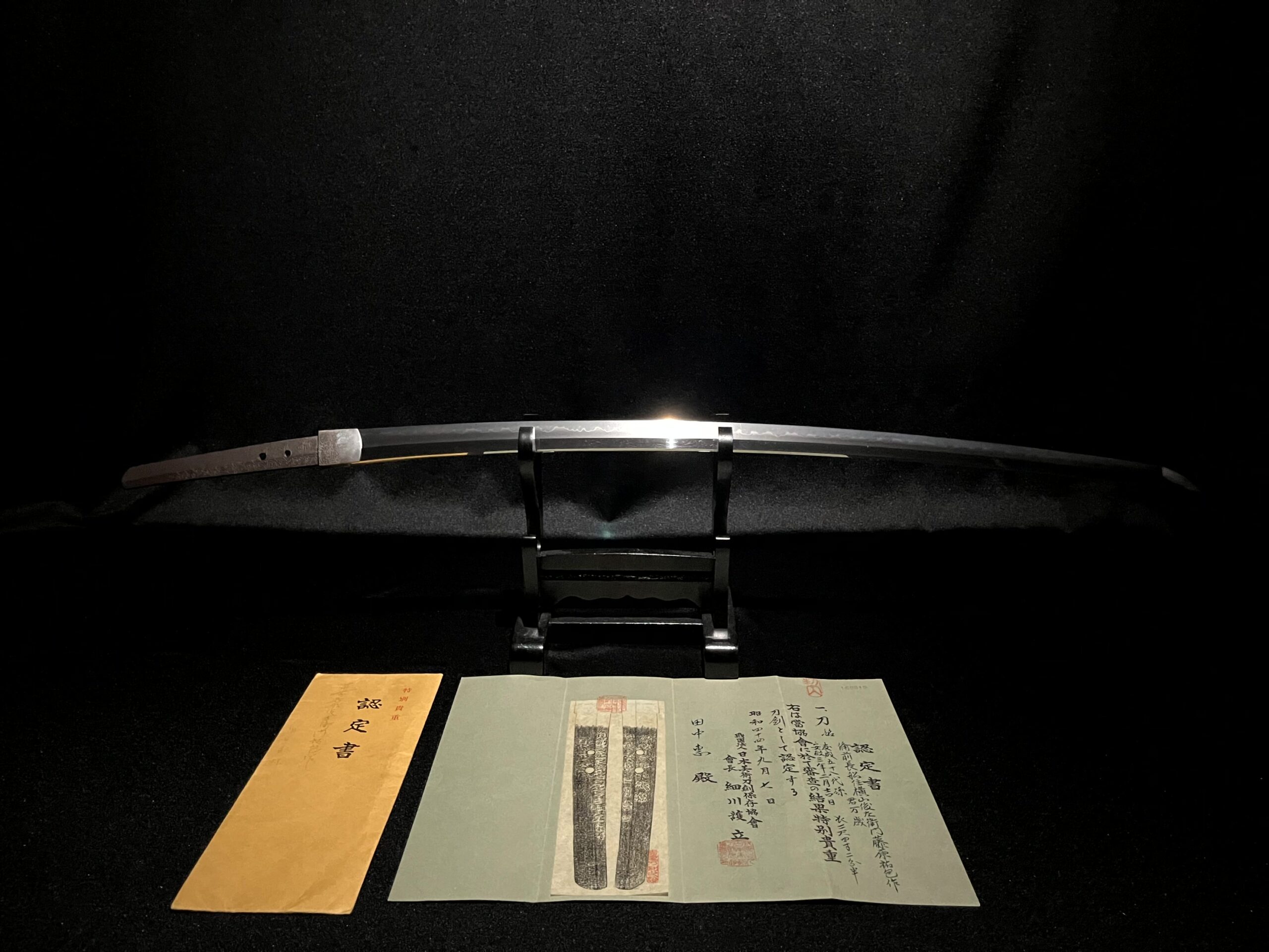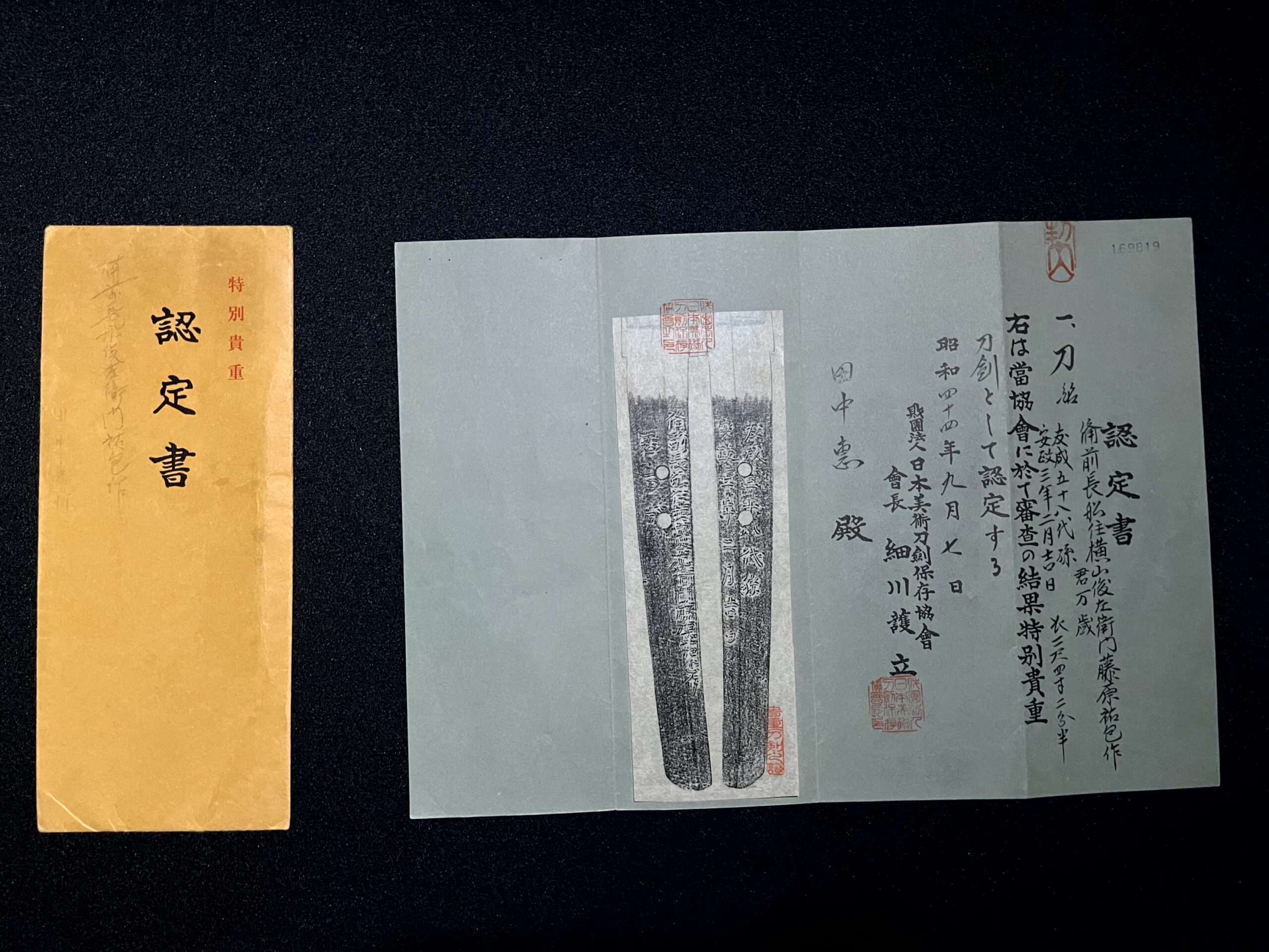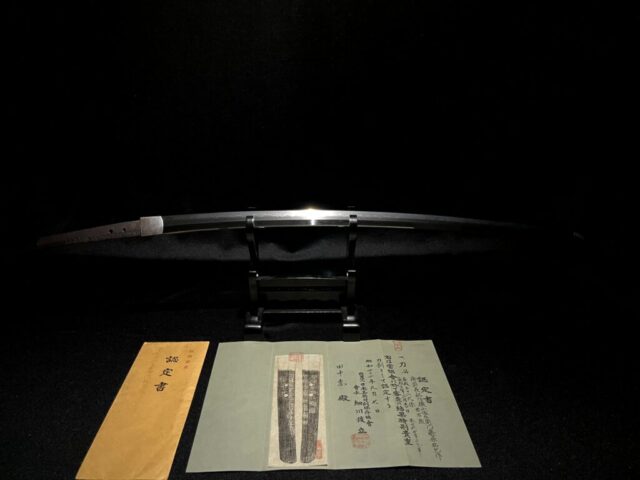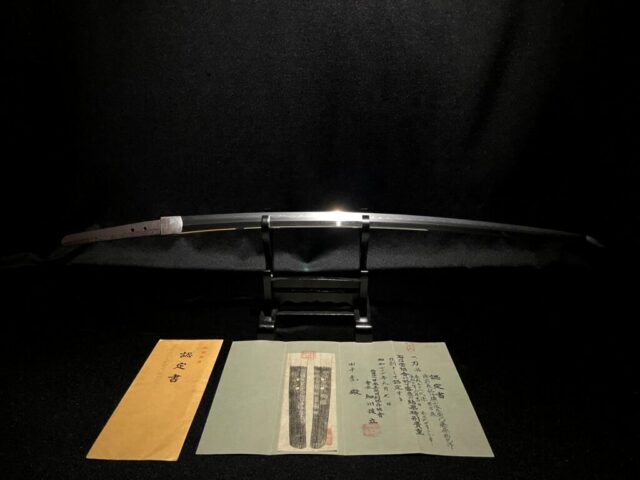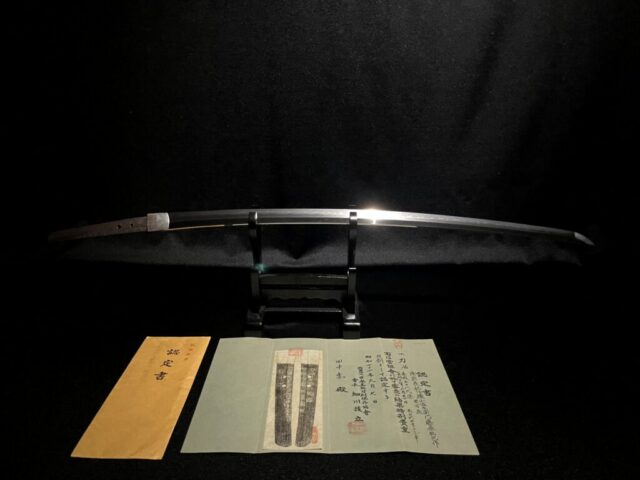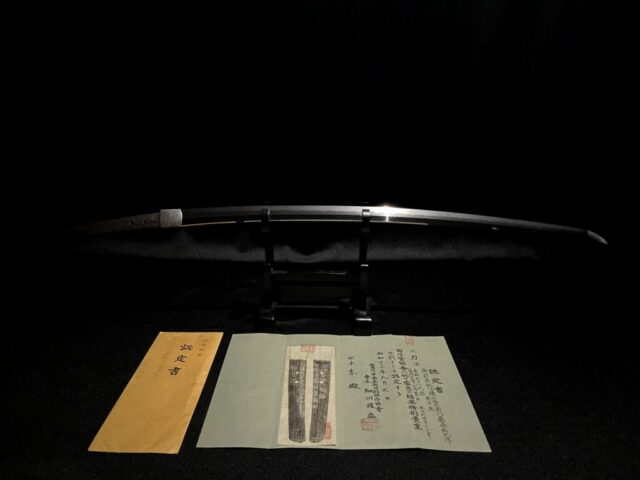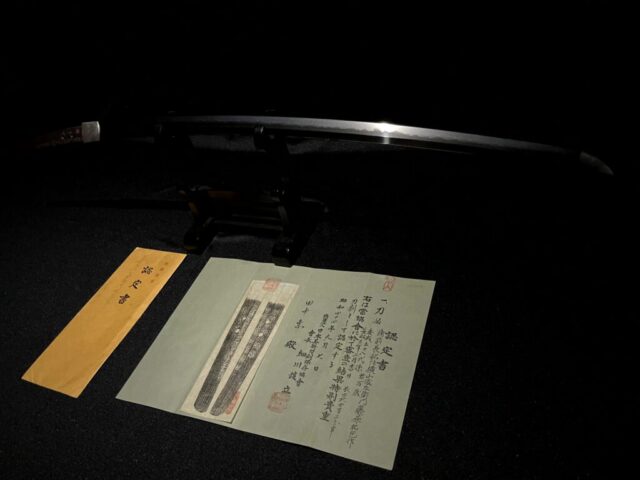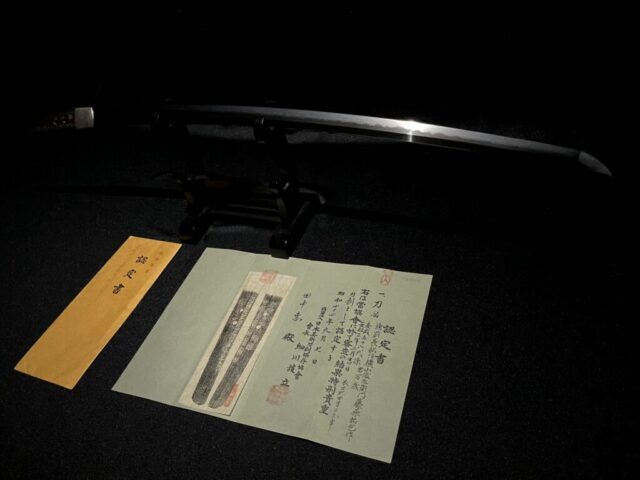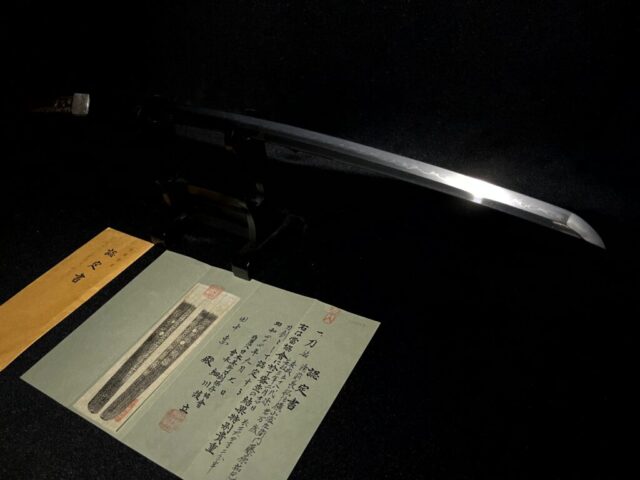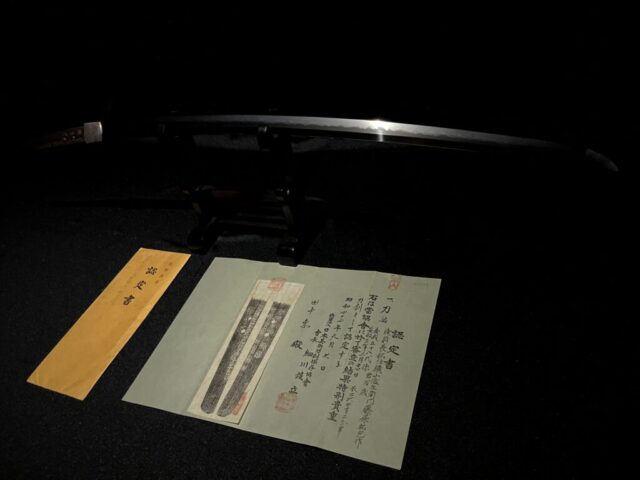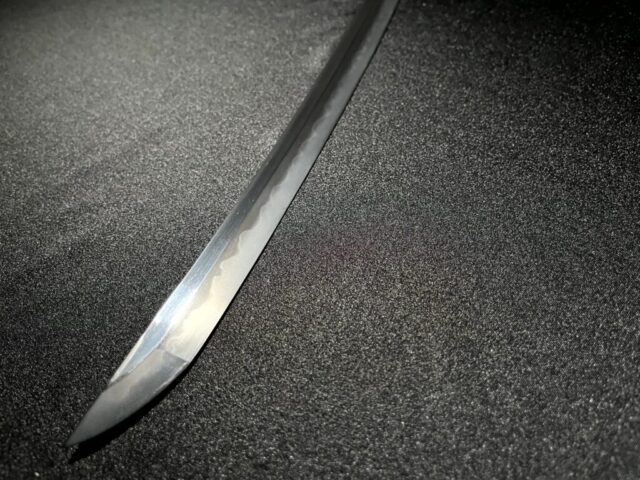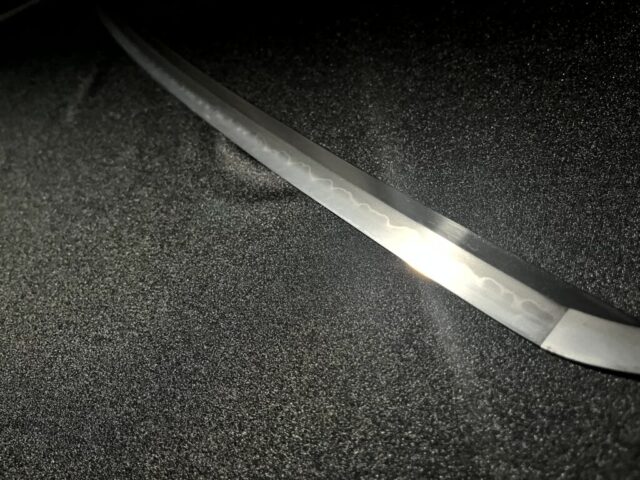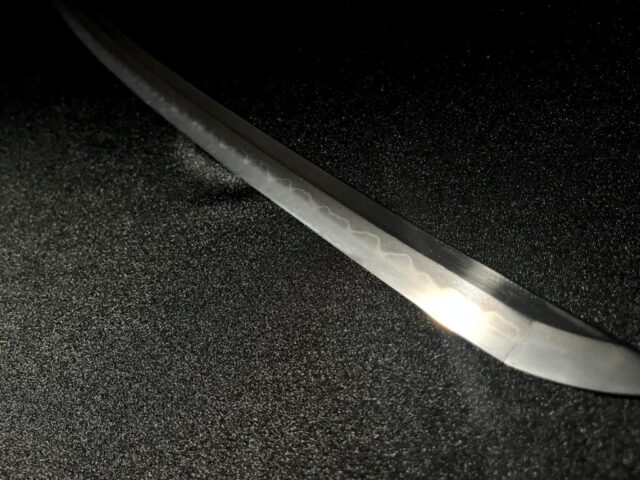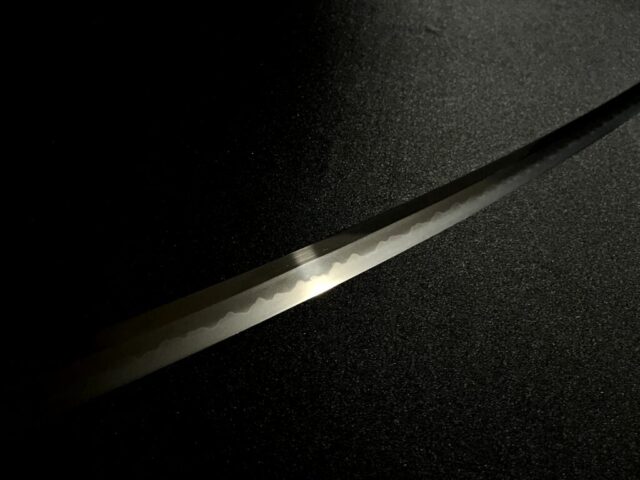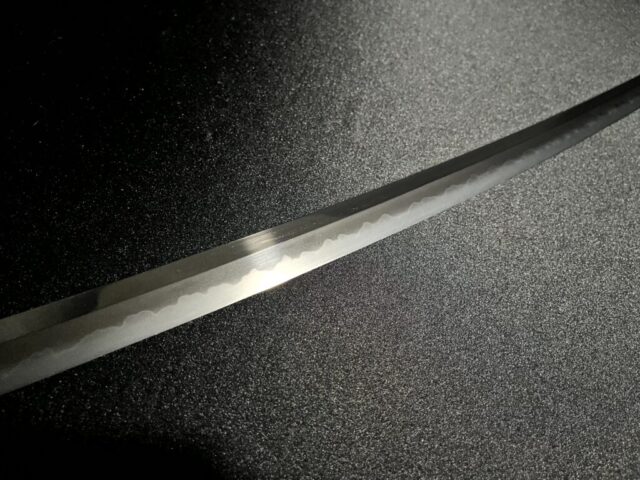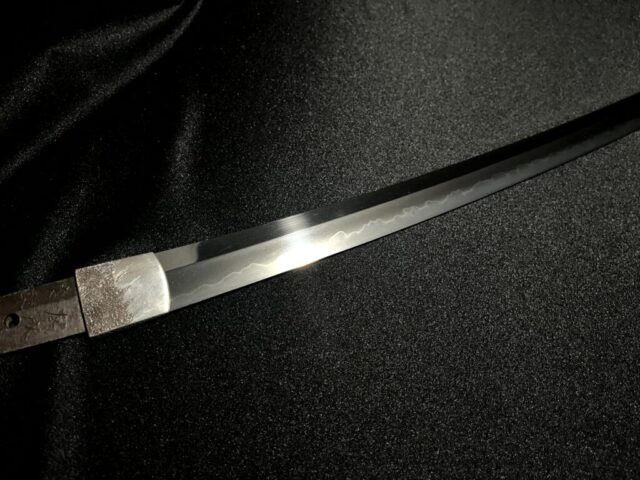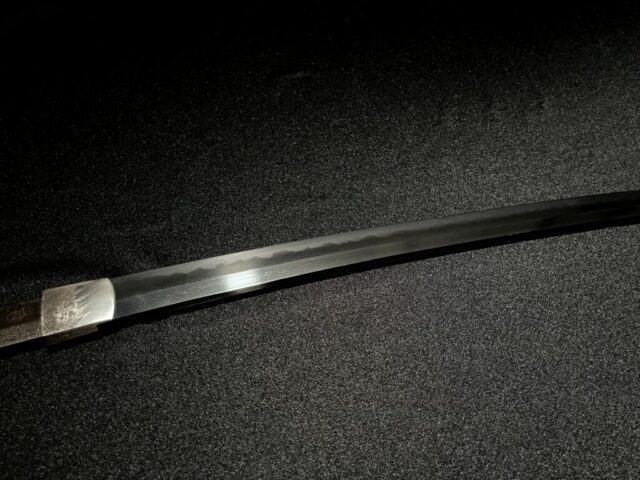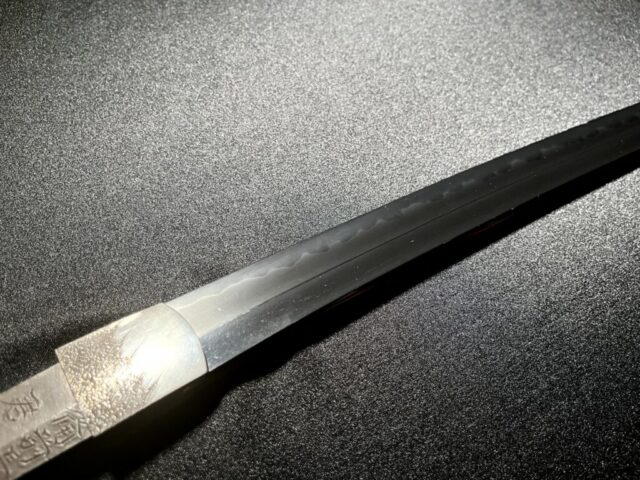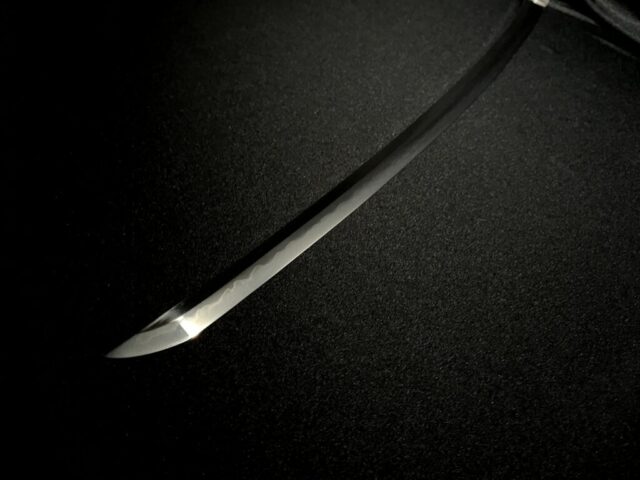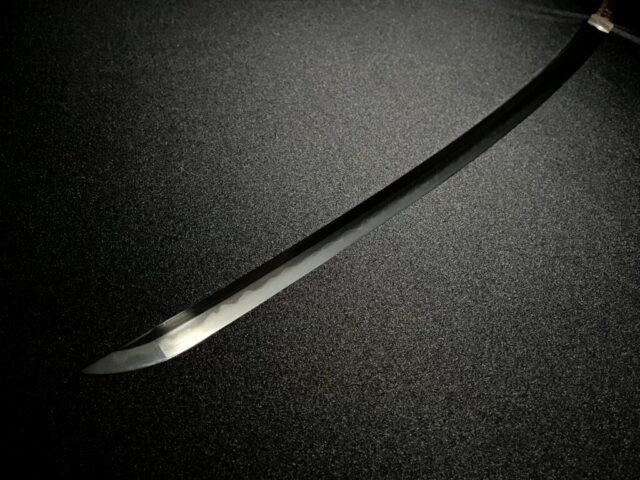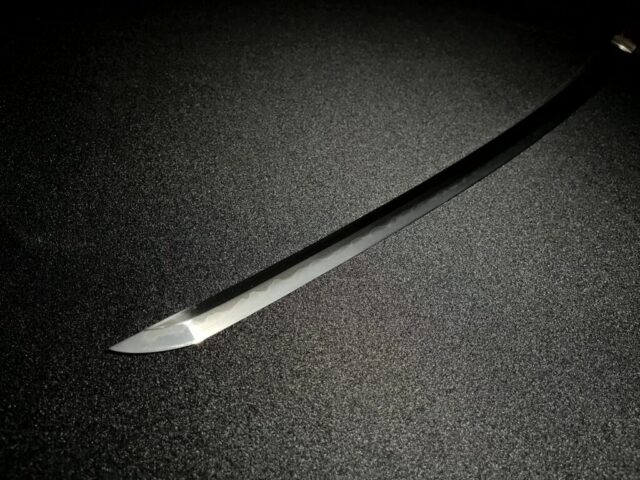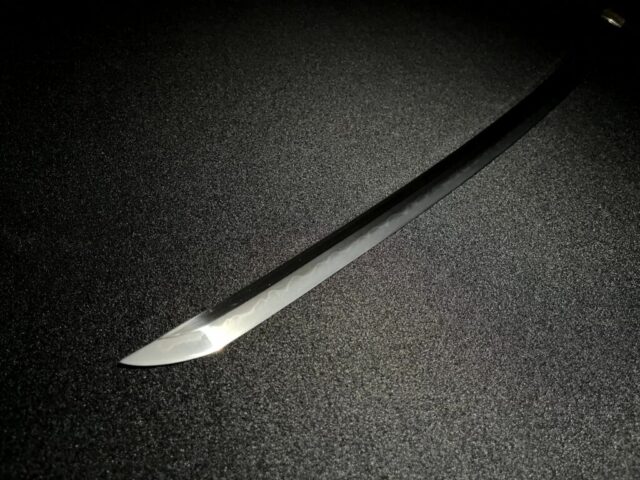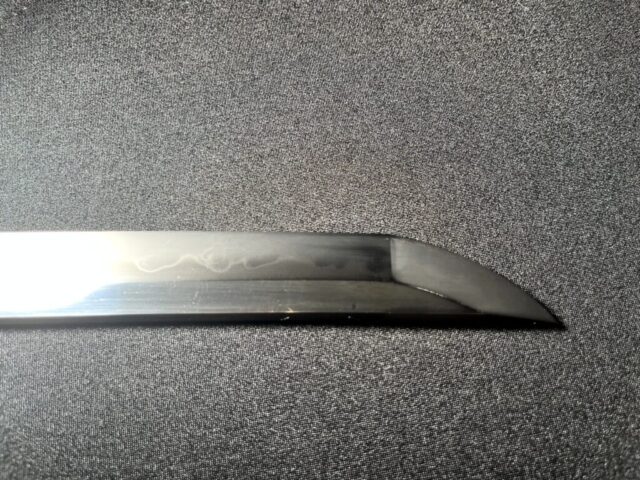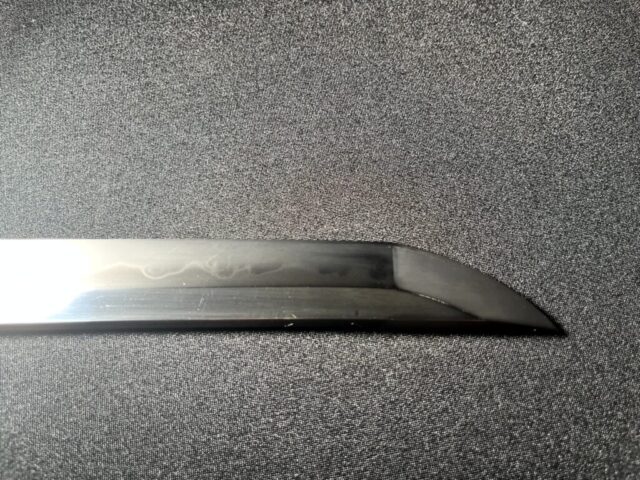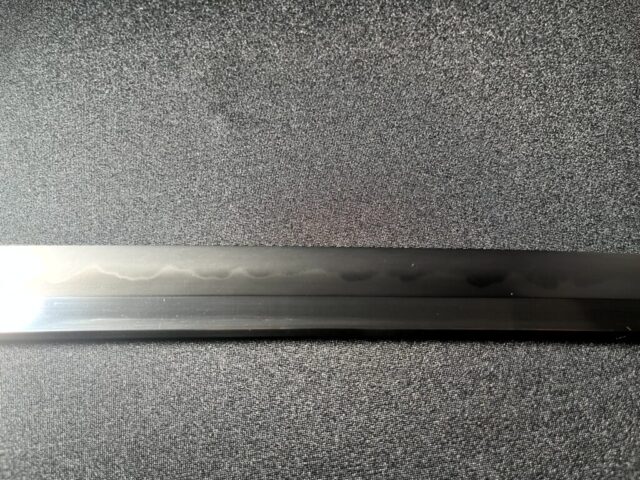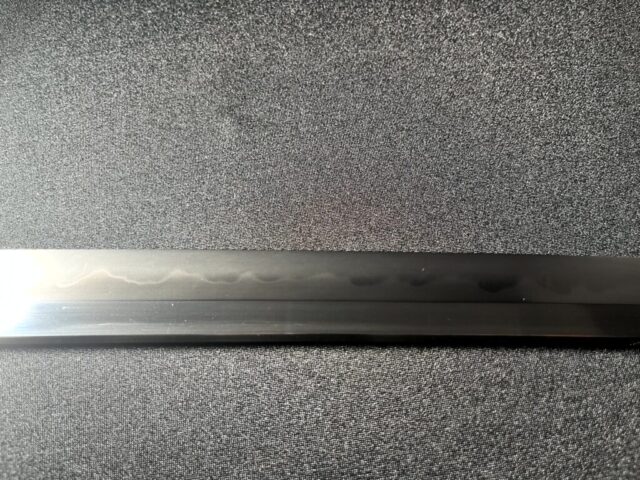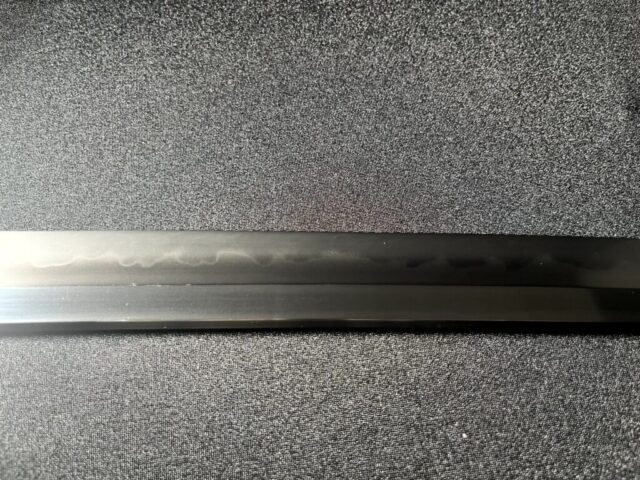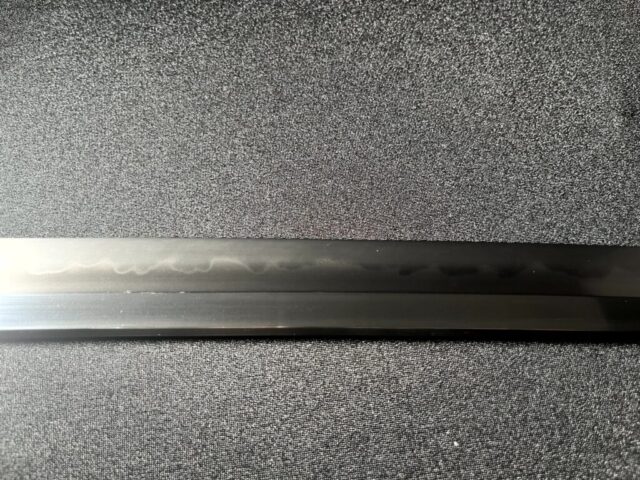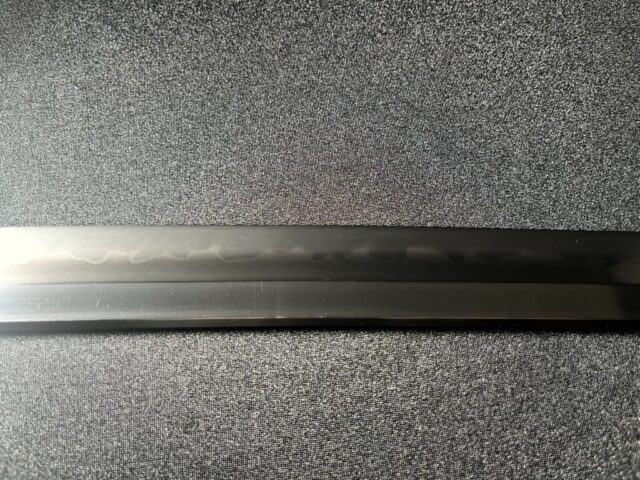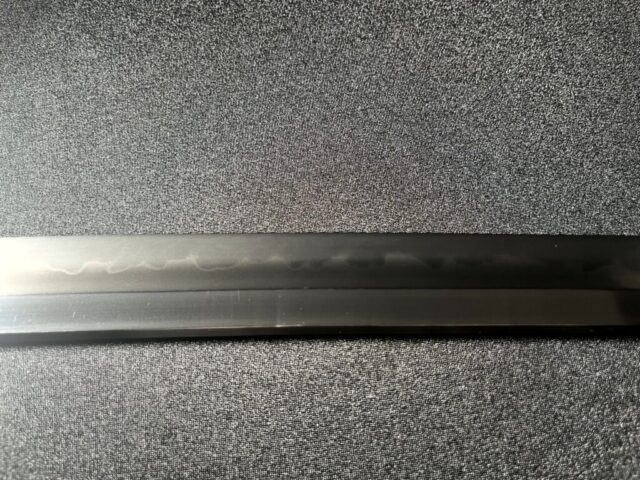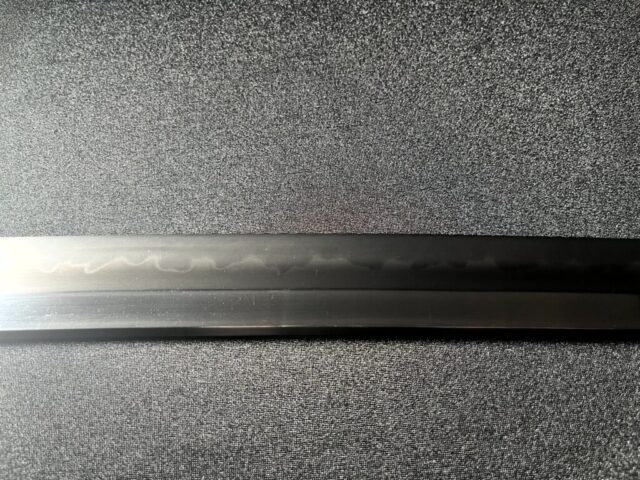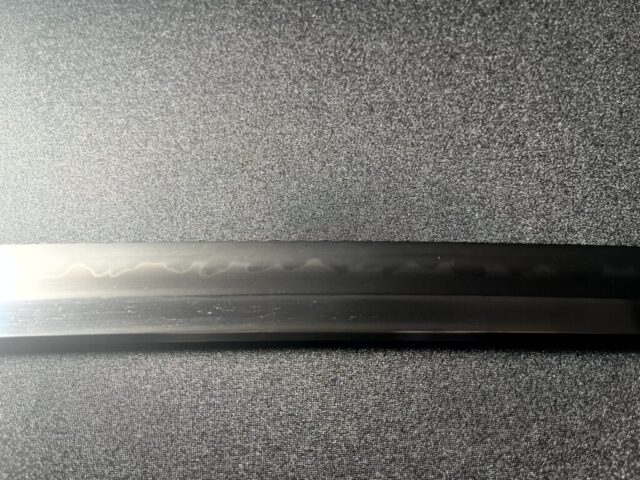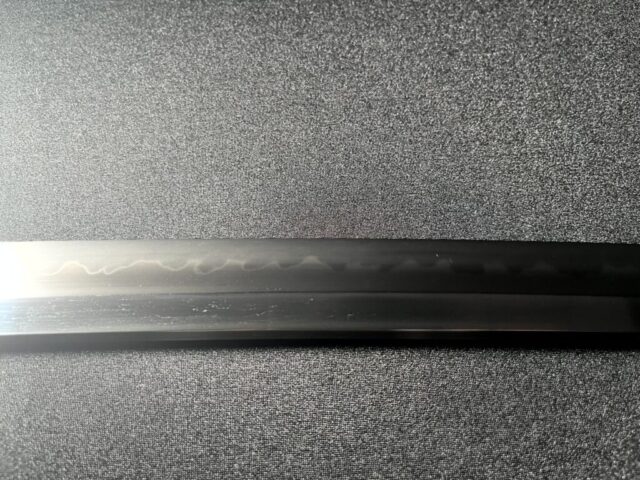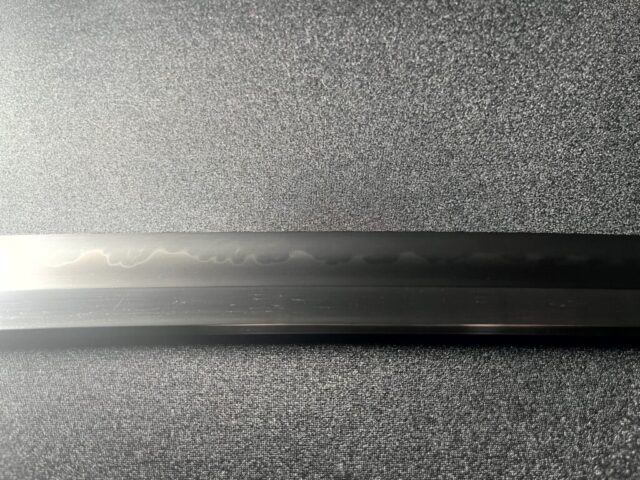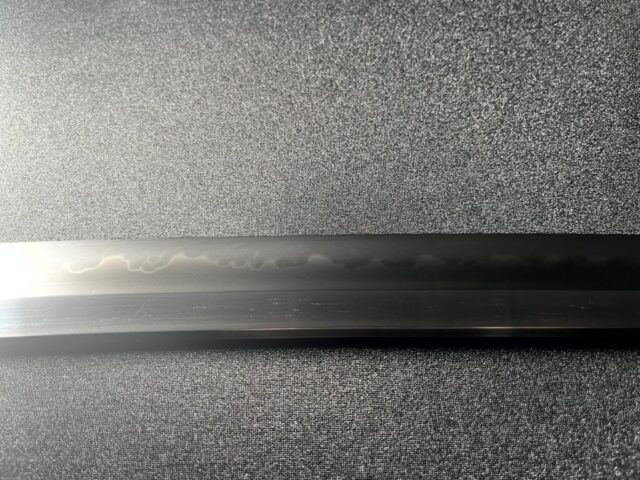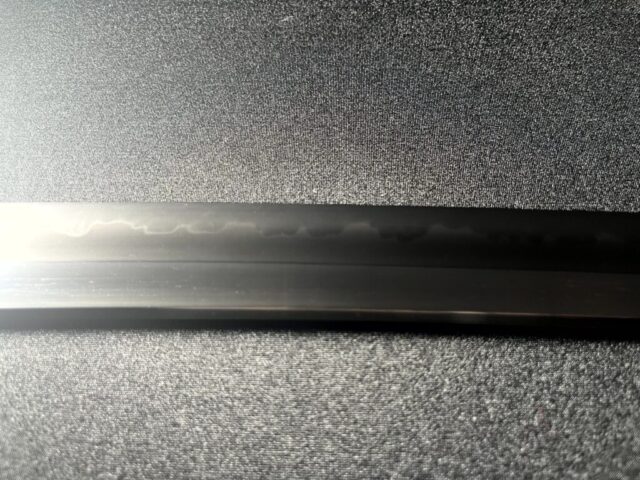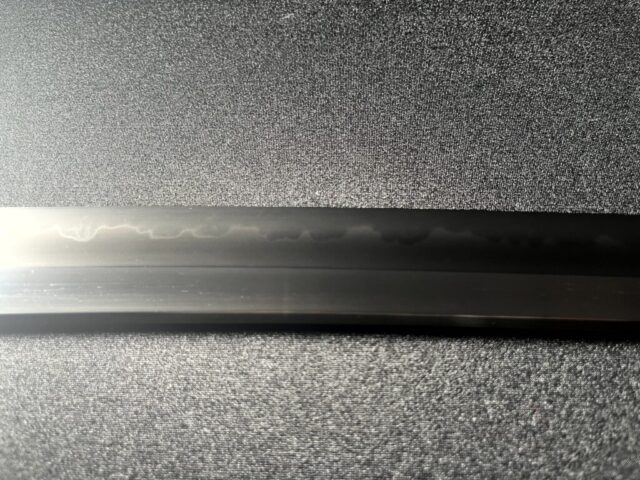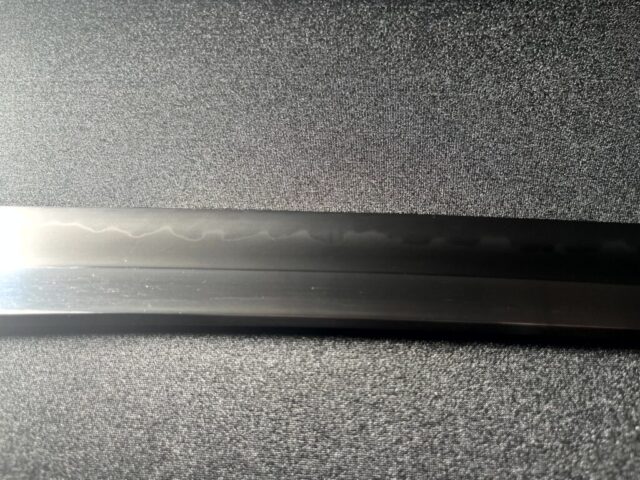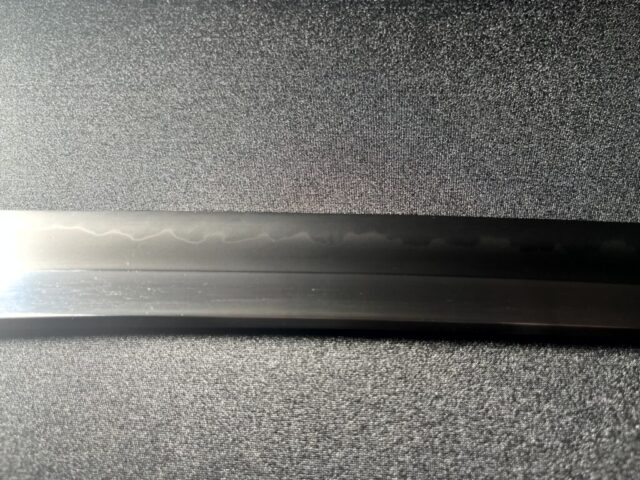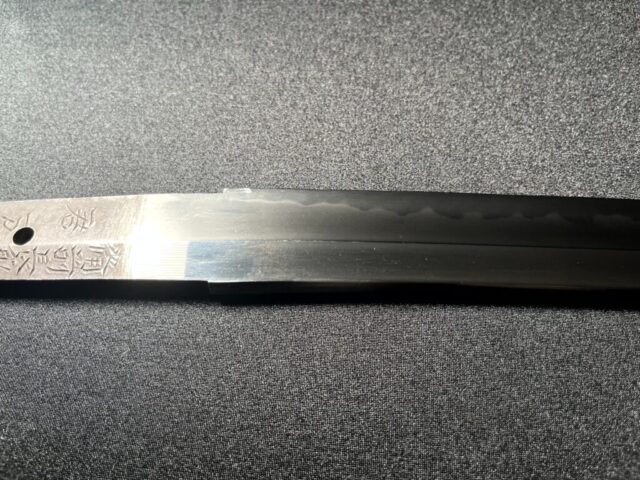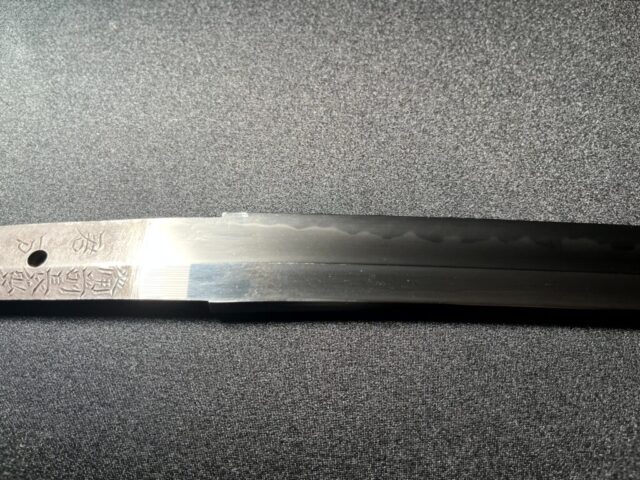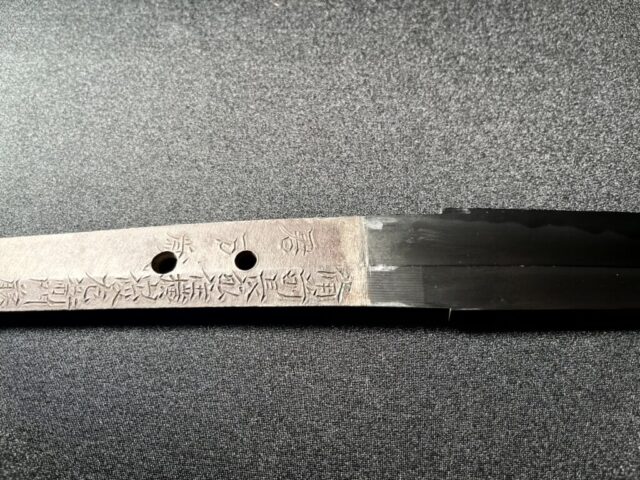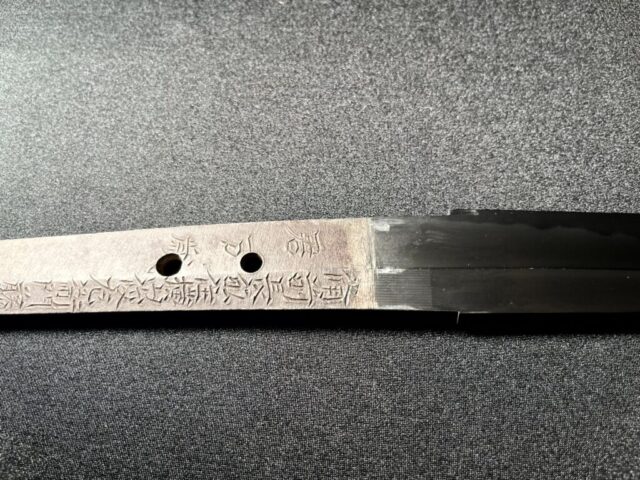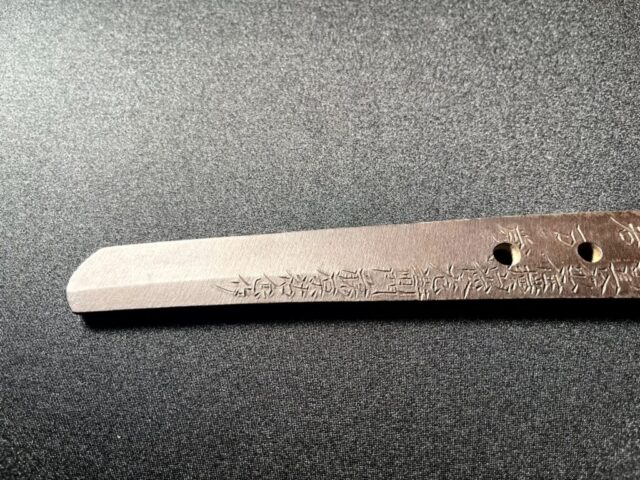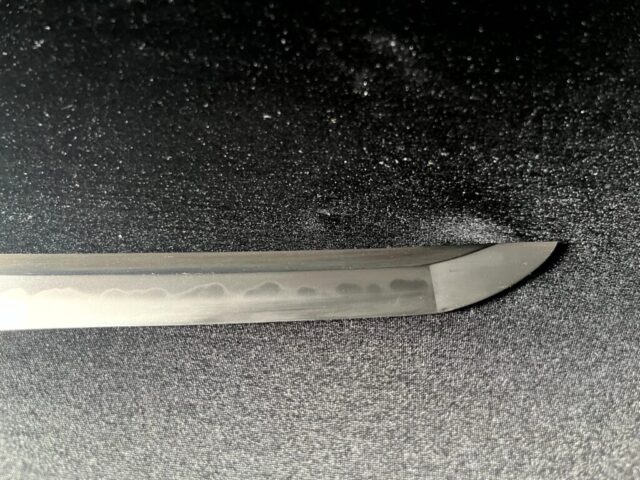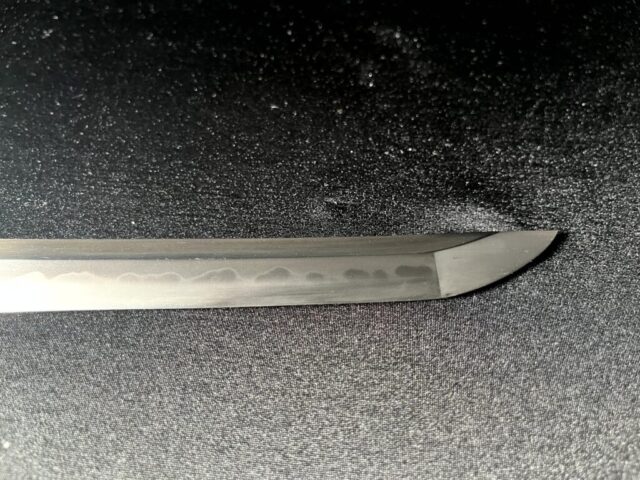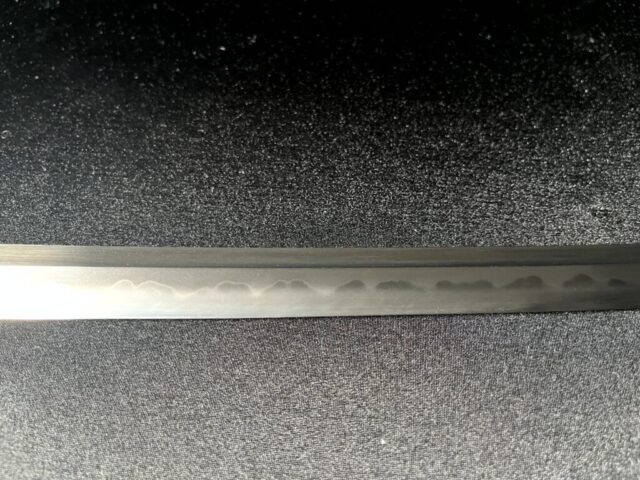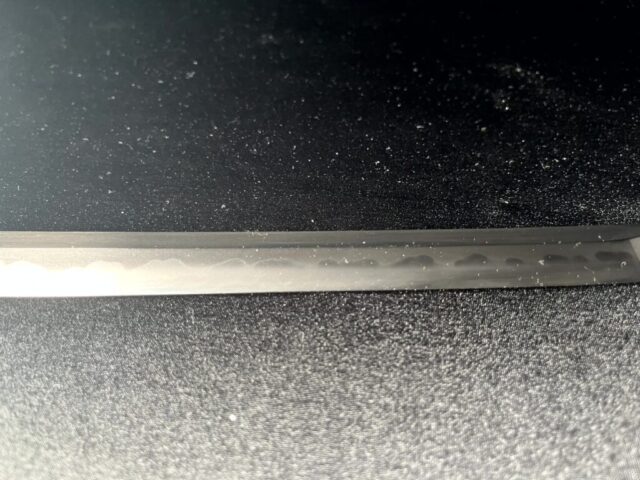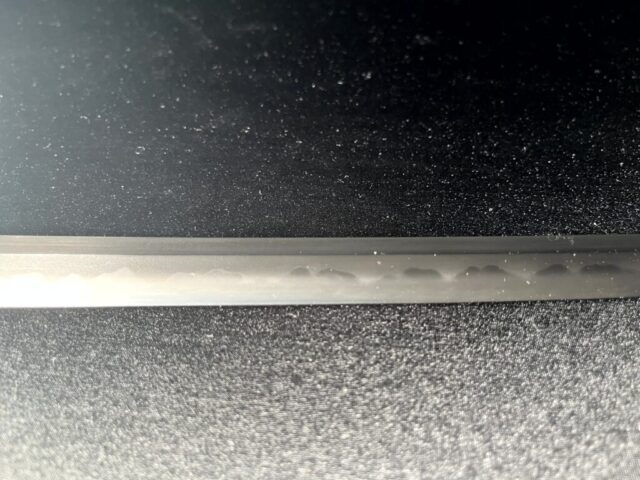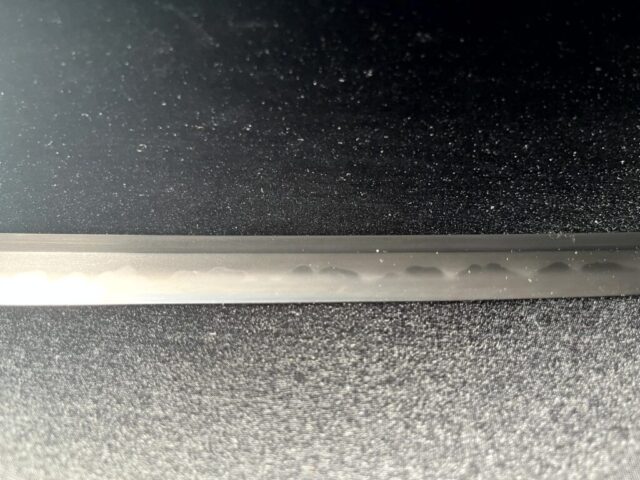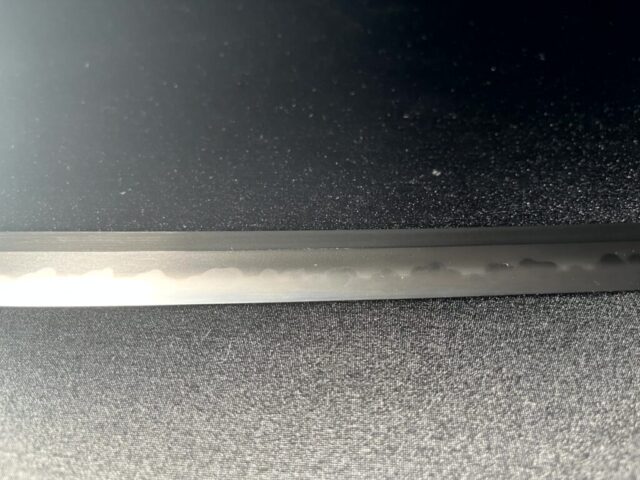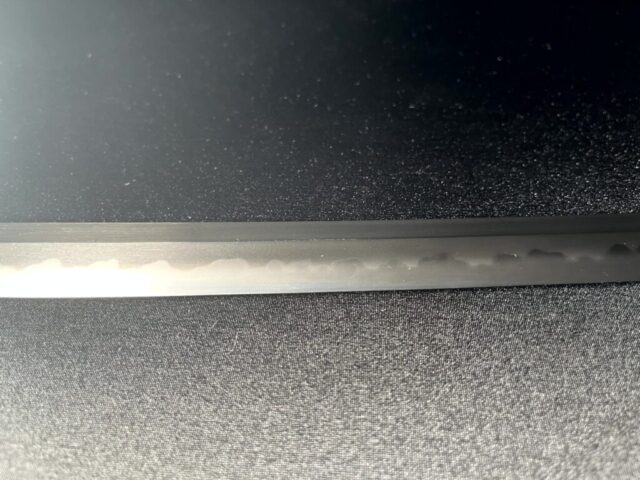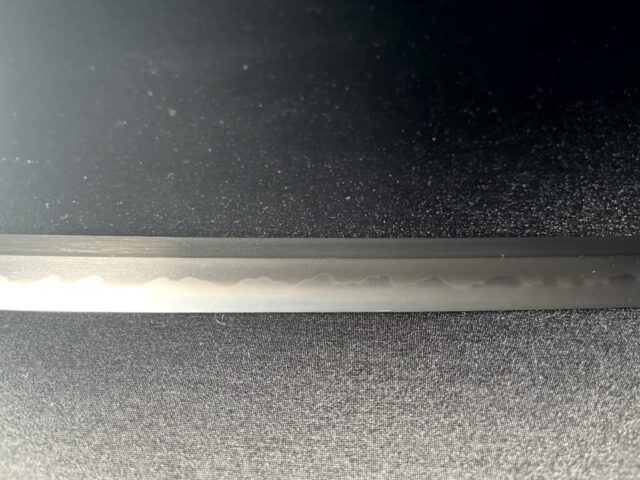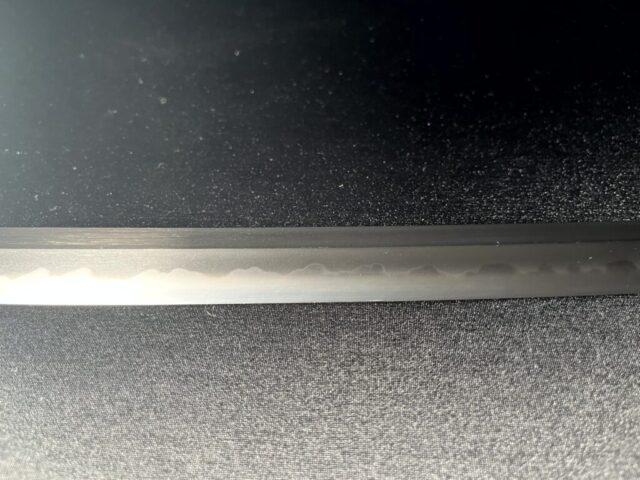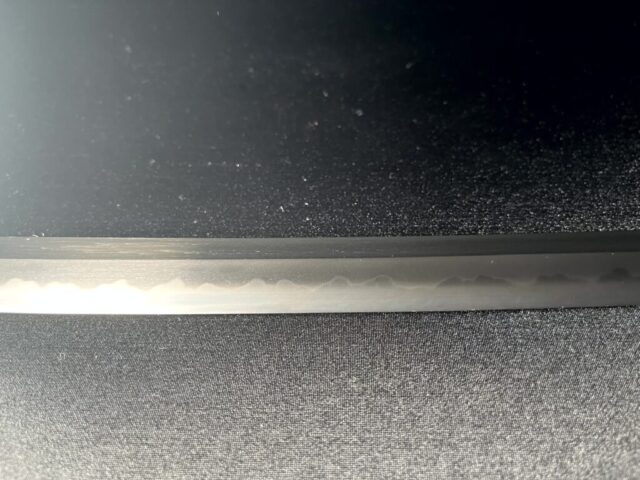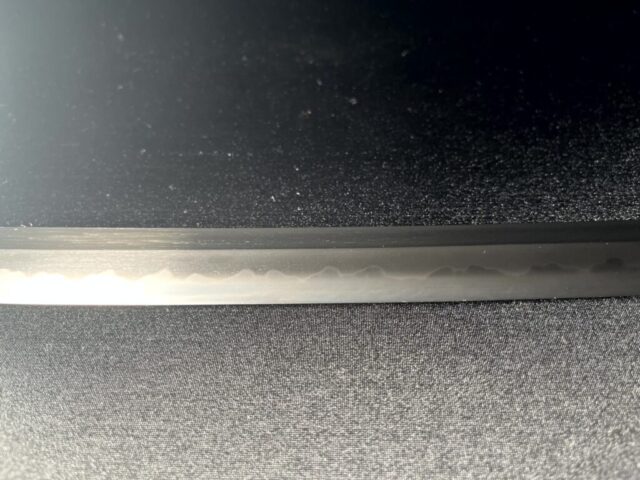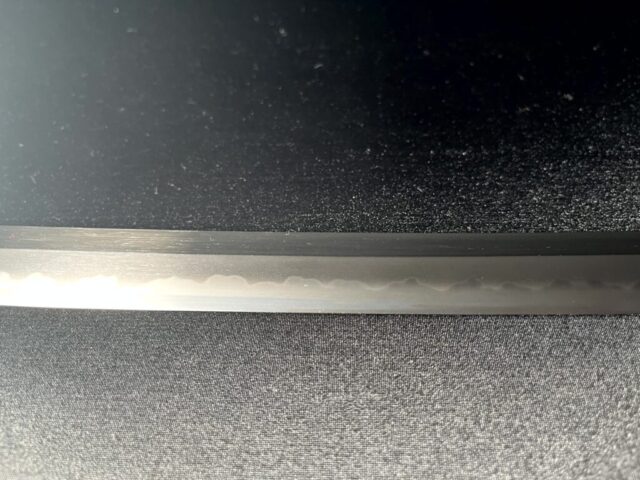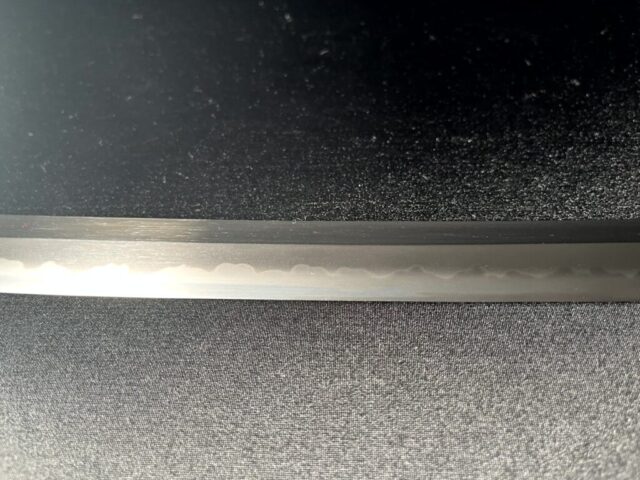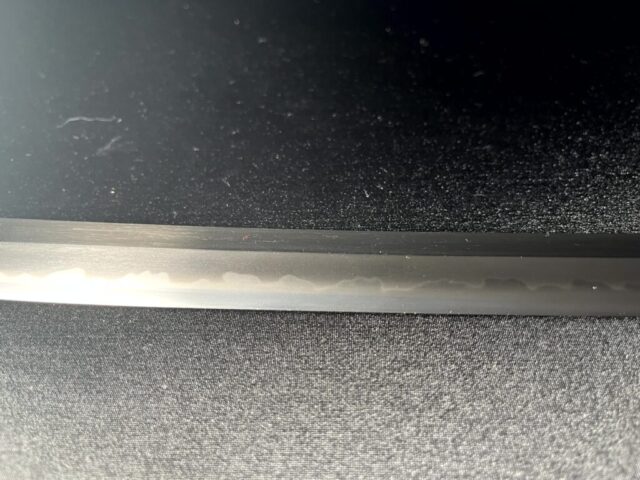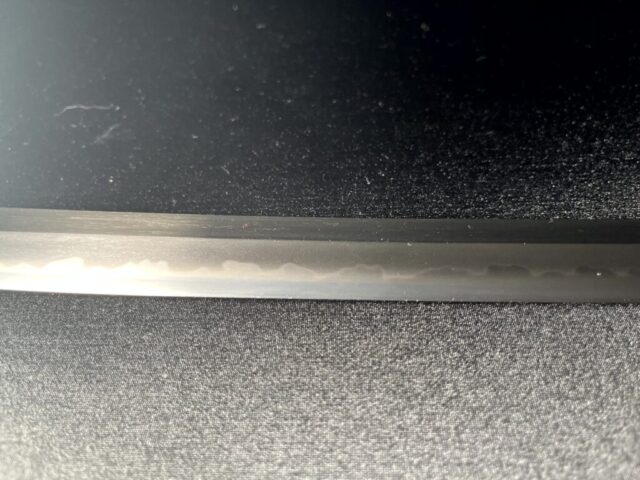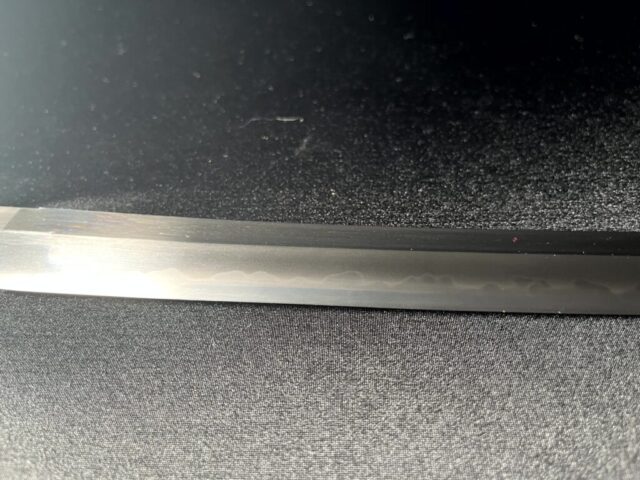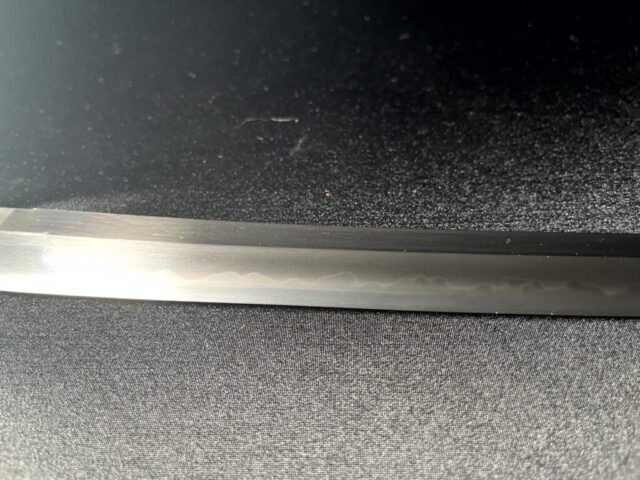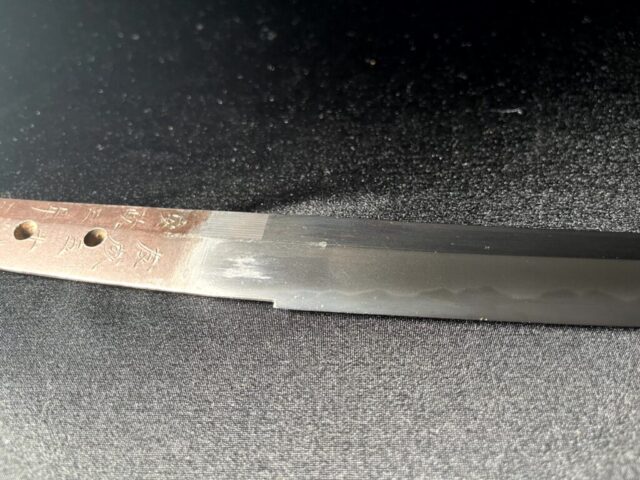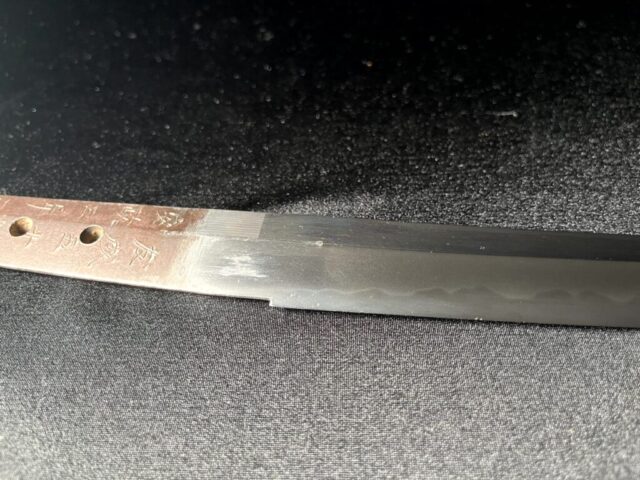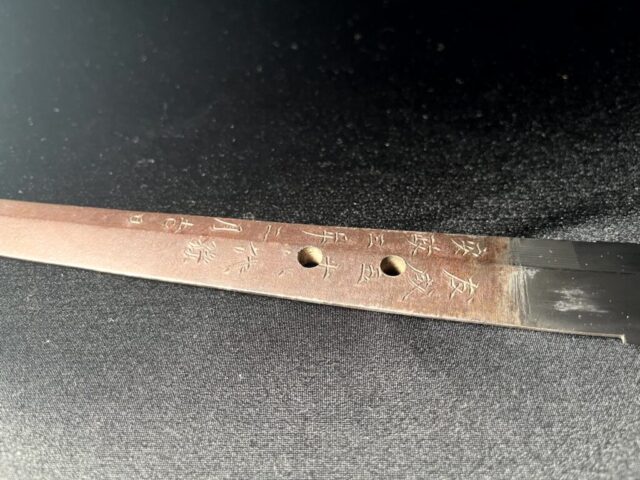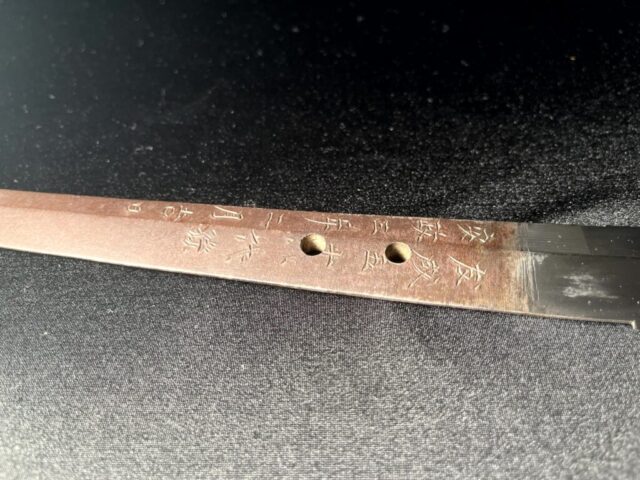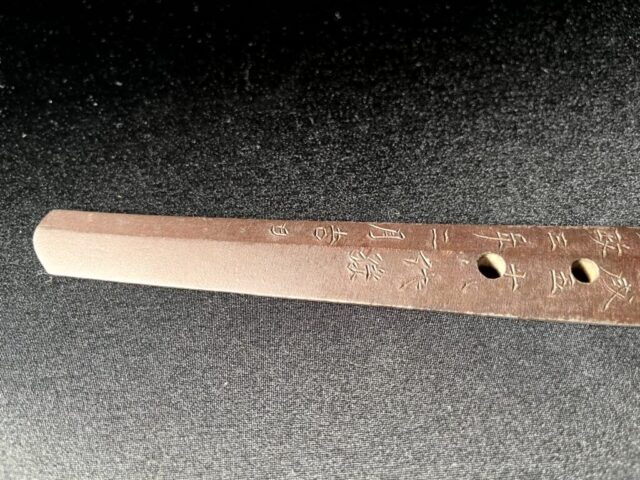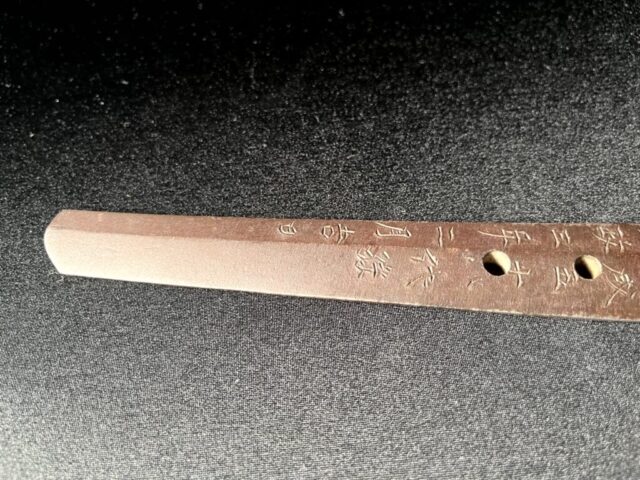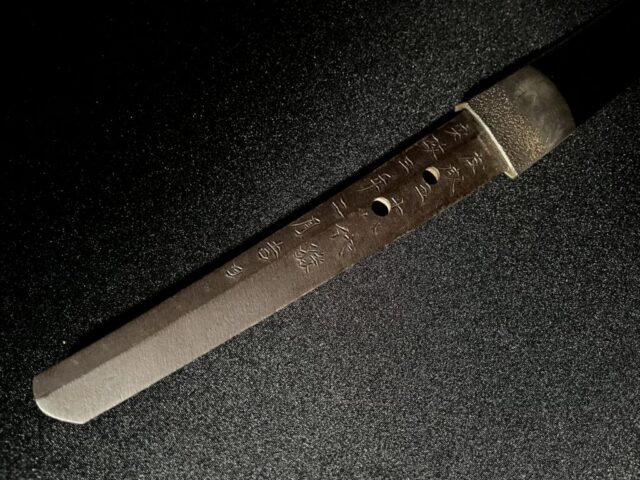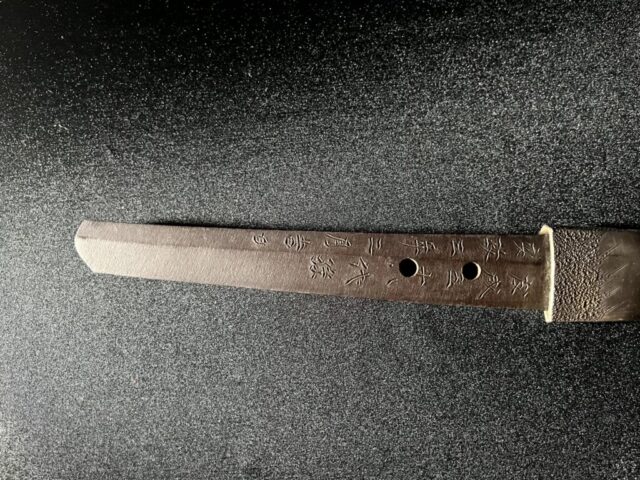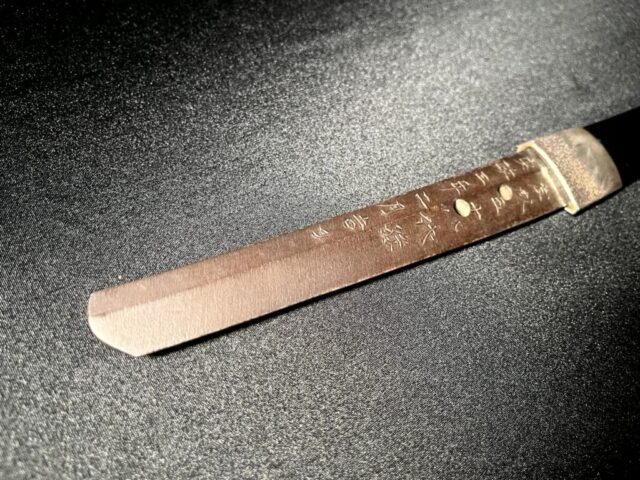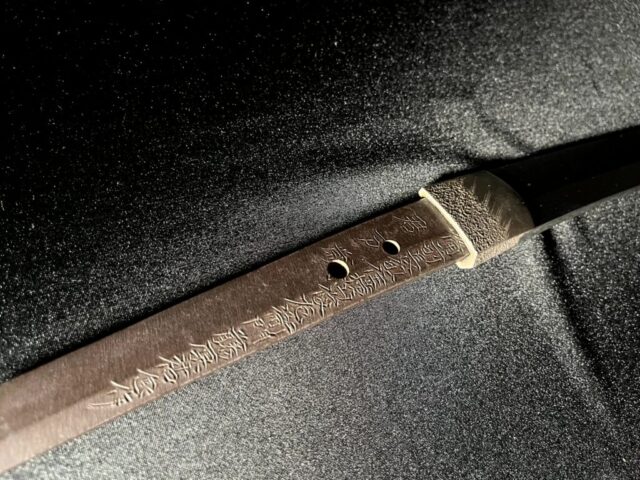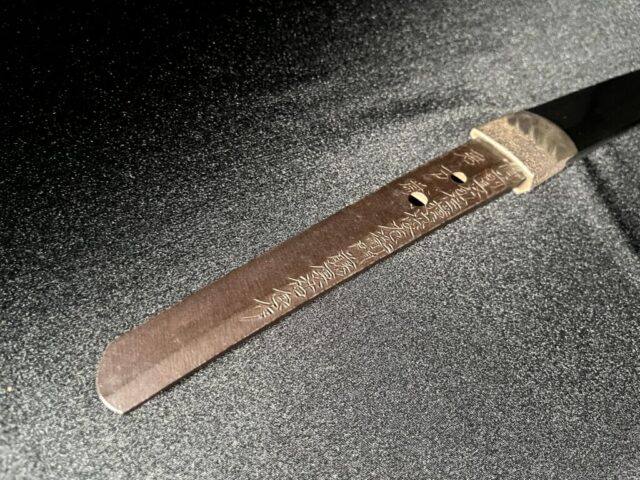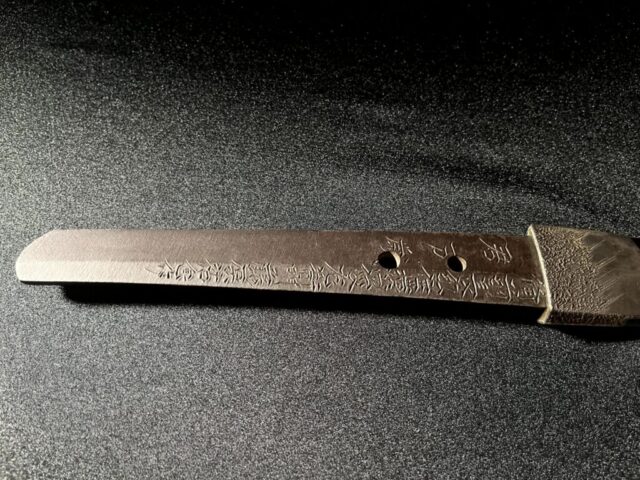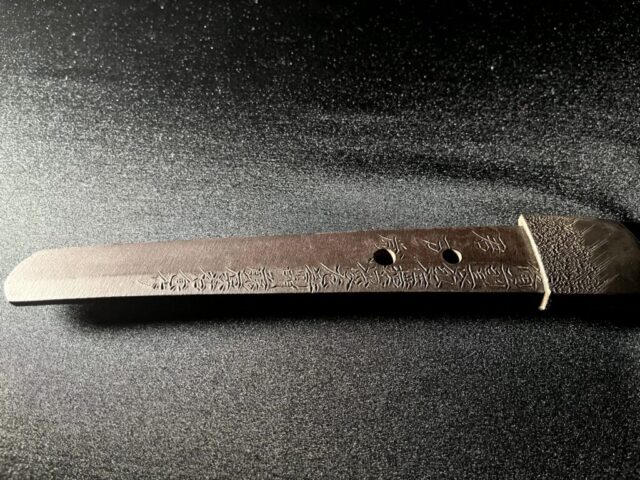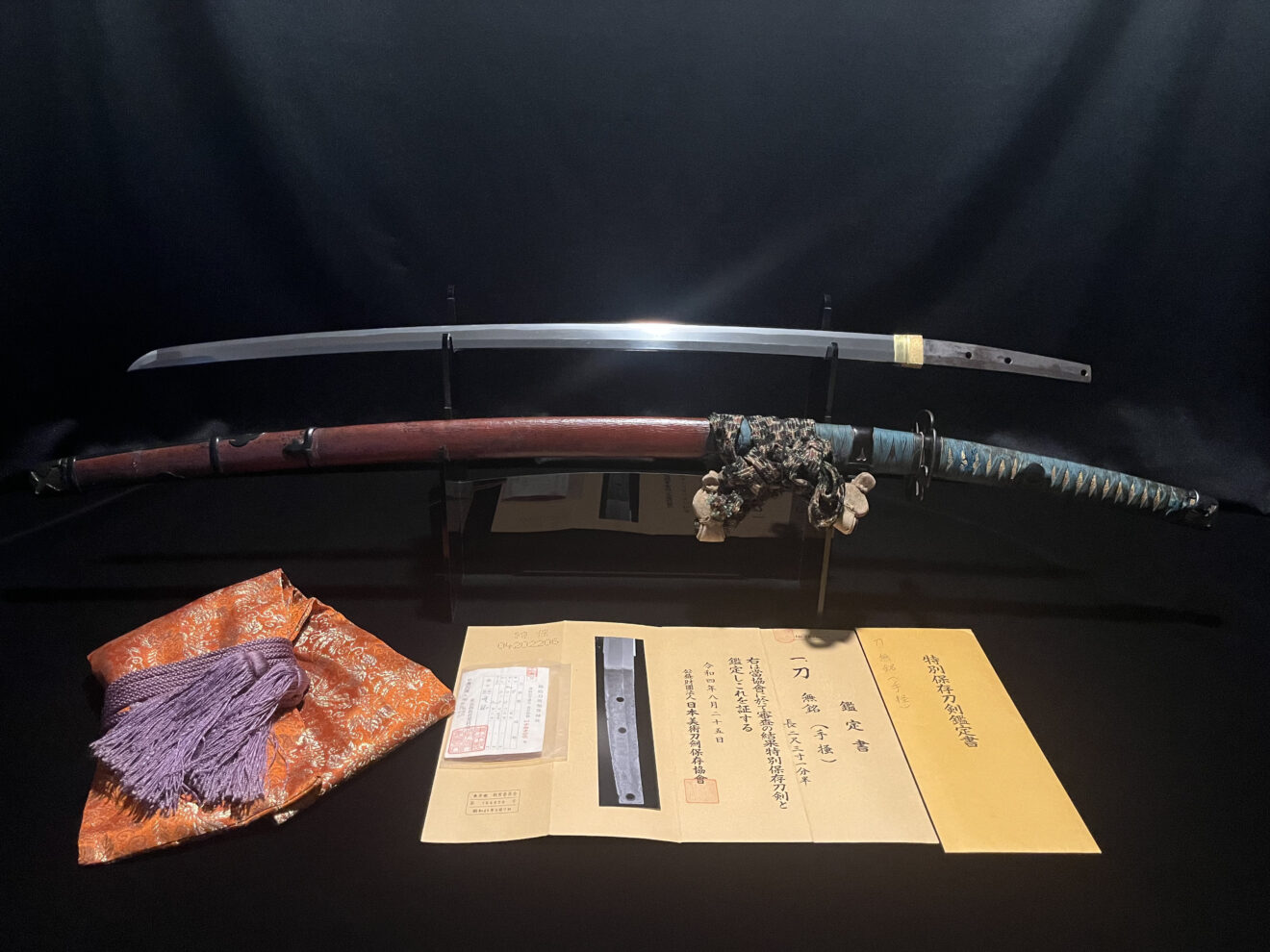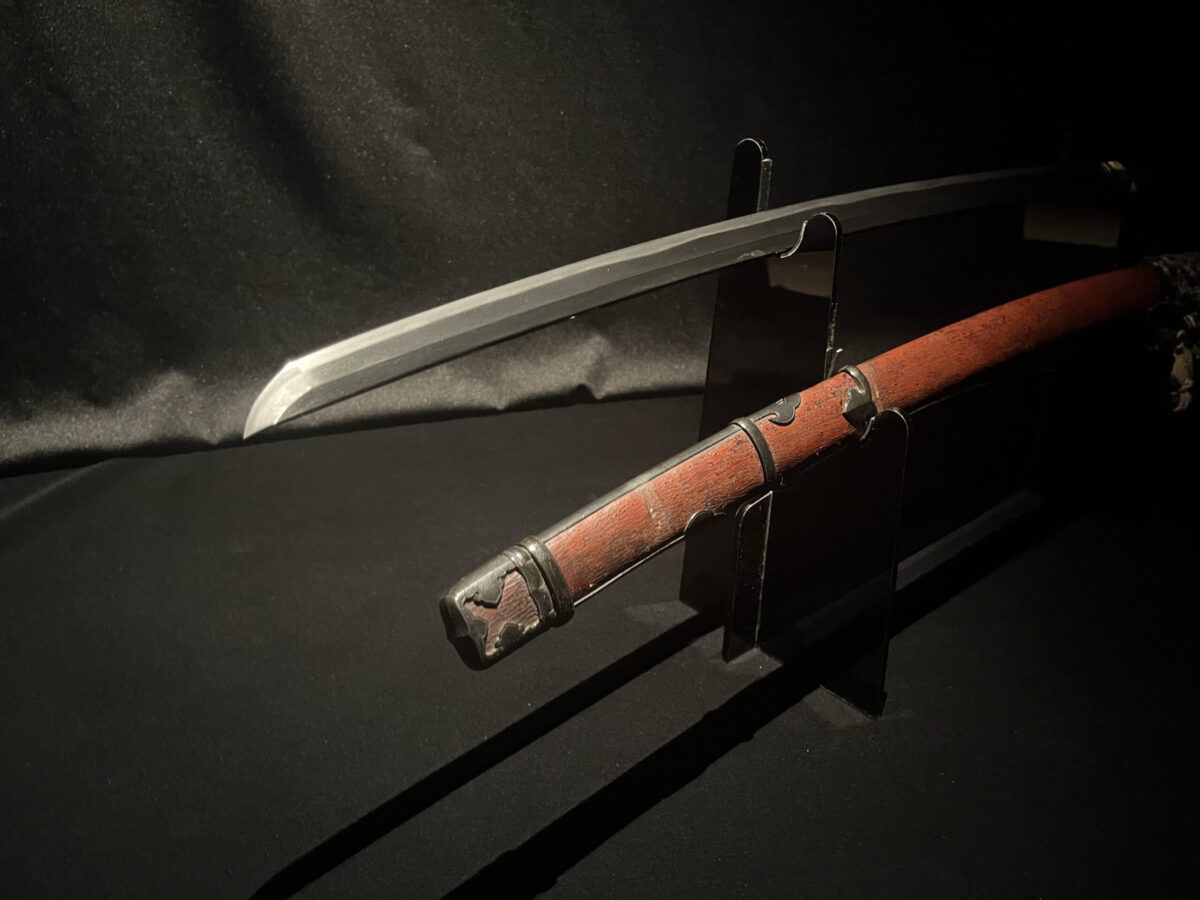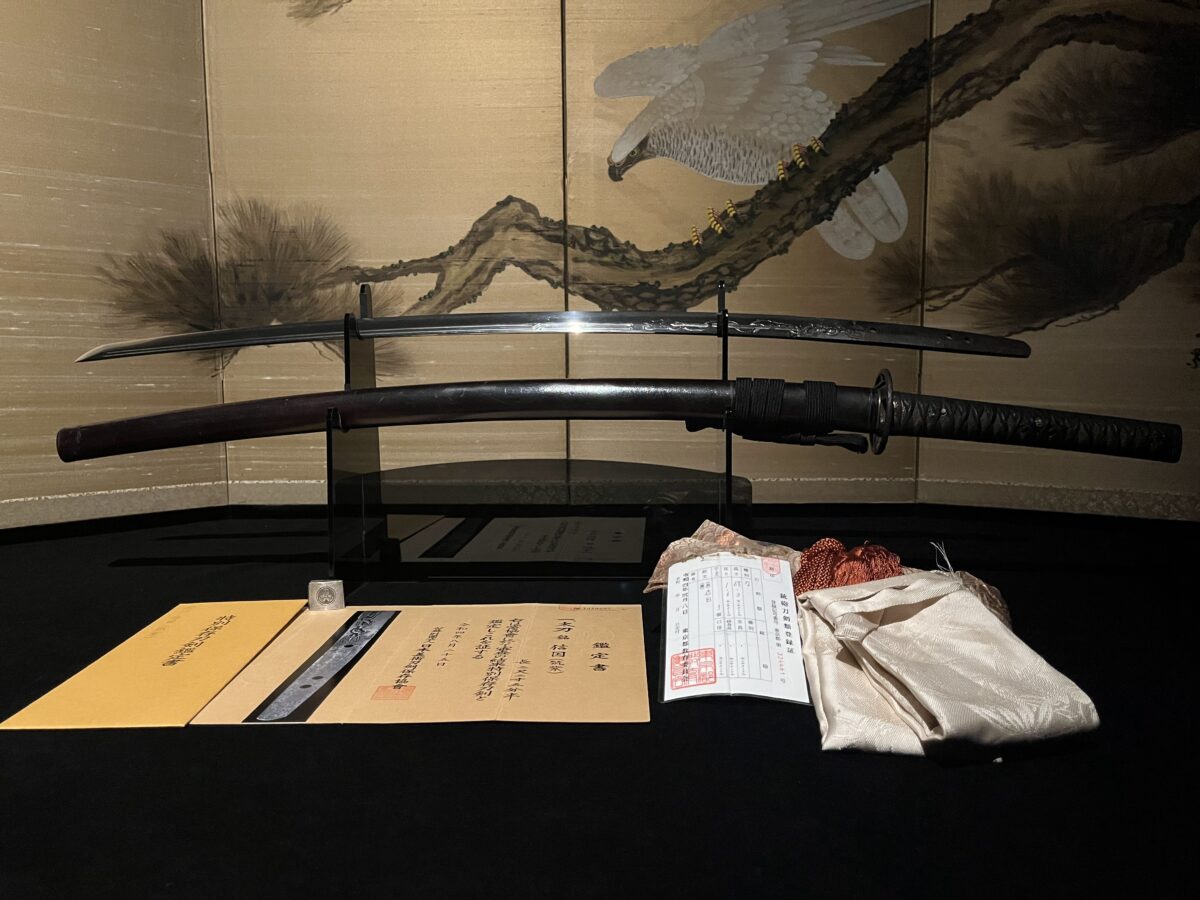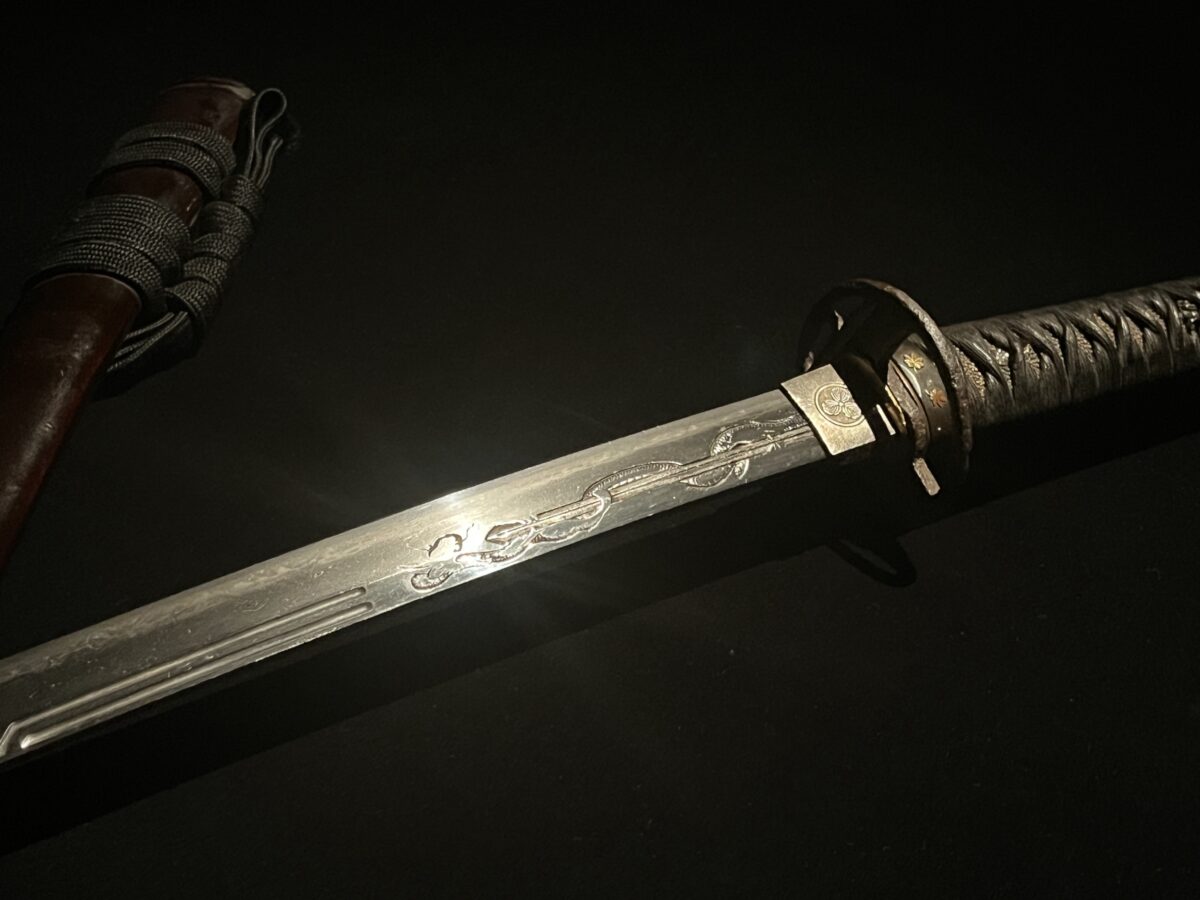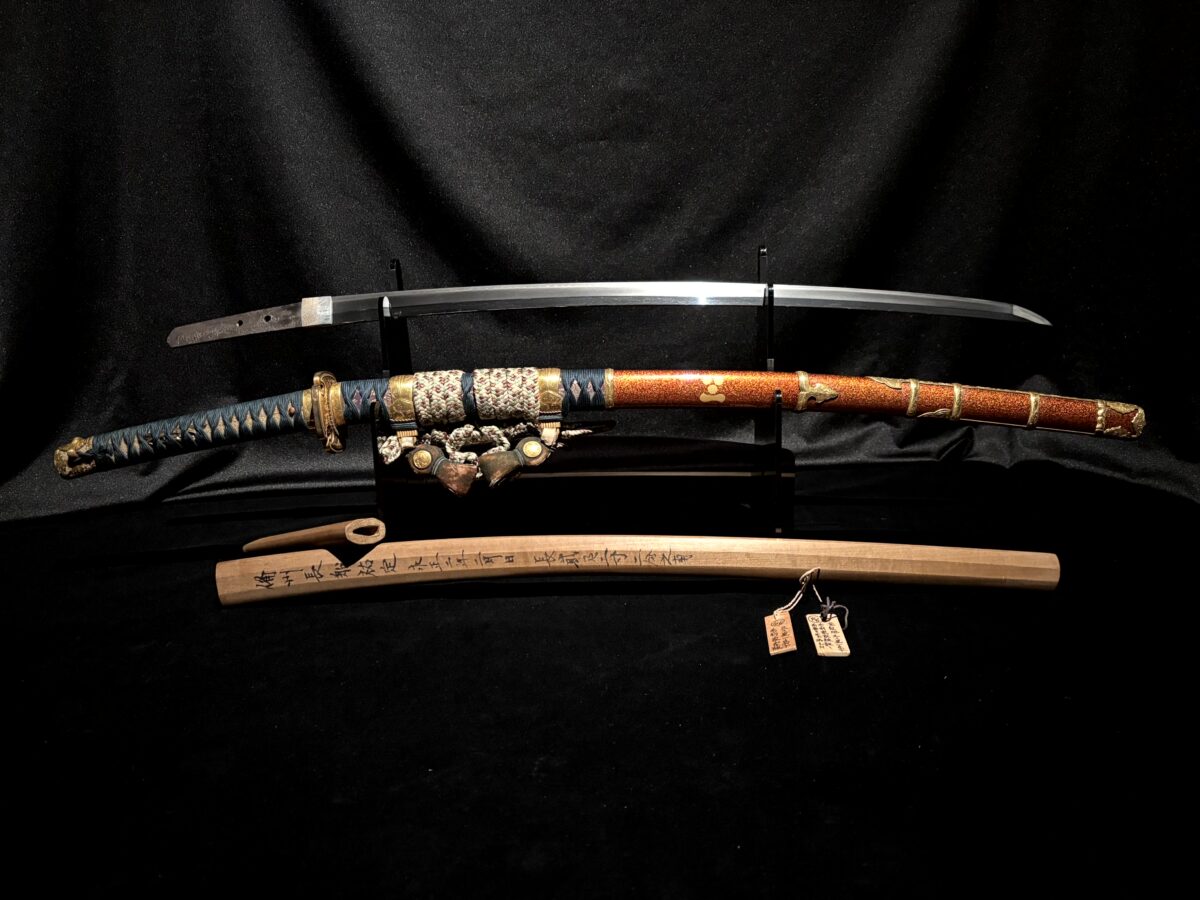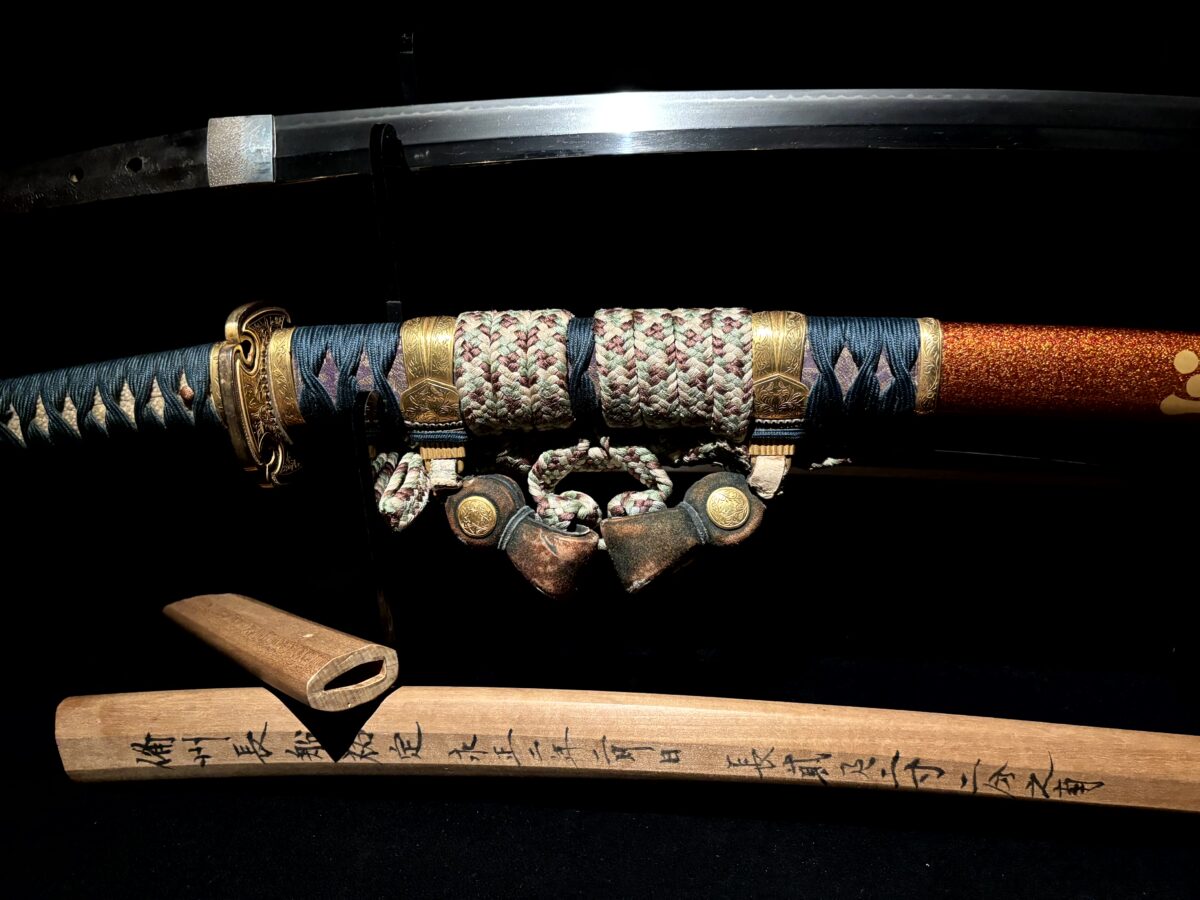Fujiwara Sukekane(藤原佑包) – Authentic Katana(1856) – Blade Form and Hamon Focus
JPY ¥ 1,512,000
Description
From the Katana Enthusiast

A commanding Katana with a powerfully built, uncompromising form that exudes overwhelming presence.
With a blade length of 73.7 cm and an overall length of 92.6 cm, it delivers remarkable weight and balance, further enhanced by a vividly expressive Midareba (an irregular Hamon pattern) in excellent condition.
Ideal for those seeking a Japanese sword that captures the sculptural beauty of form and function.
Katana Certificate of Authenticity and Registration
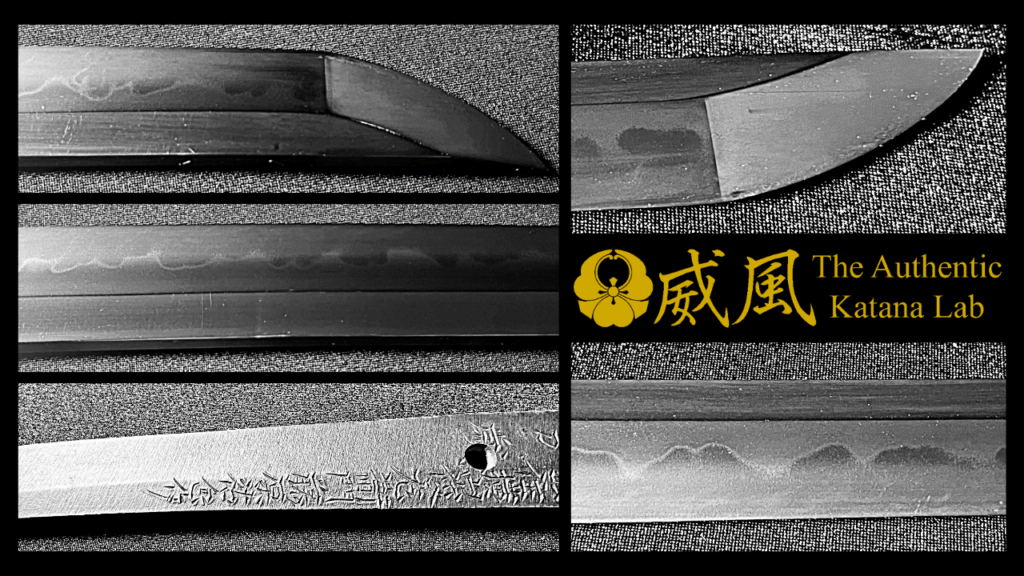
Based on a comprehensive evaluation of every detail and element of craftsmanship, we can confidently state that this Katana is not only a “Real Katana,” but also an “Authentic Katana” of exceptional historical value. For the definition of an Authentic Katana, please refer to this page.(→ What Makes A Katana Real)
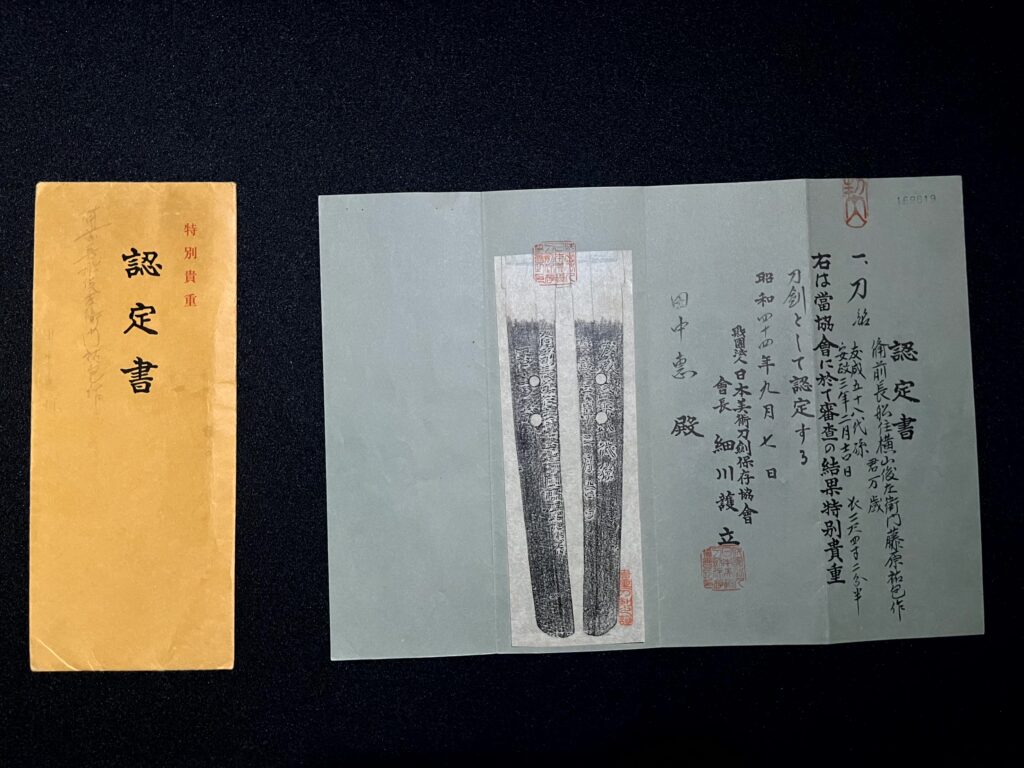
This Katana has been certified as a Tokubetsu Kicho Token (特別貴重刀剣) by the NBTHK (Nihon Bijutsu Token Hozon Kyokai), a prominent organization in Japan dedicated to the preservation of Japanese swords. This title is awarded to swords that are considered to be of high craftsmanship and in good preservation condition. (The official certificate paper is included in the set.)
While NBTHK certification is a respected standard and provides a helpful indication of quality and authenticity, it should not be viewed as a definitive measure of a sword’s true value. In reality, many swords are able to obtain certification if they meet certain criteria, meaning not all certified swords are particularly rare or exceptional. Conversely, some outstanding swords remain uncertified simply because their owners have not submitted them for evaluation.
That said, being recognized by Japan’s most established sword appraisal organization does provide a useful baseline, and can serve as a reassuring point of reference when considering a sword.
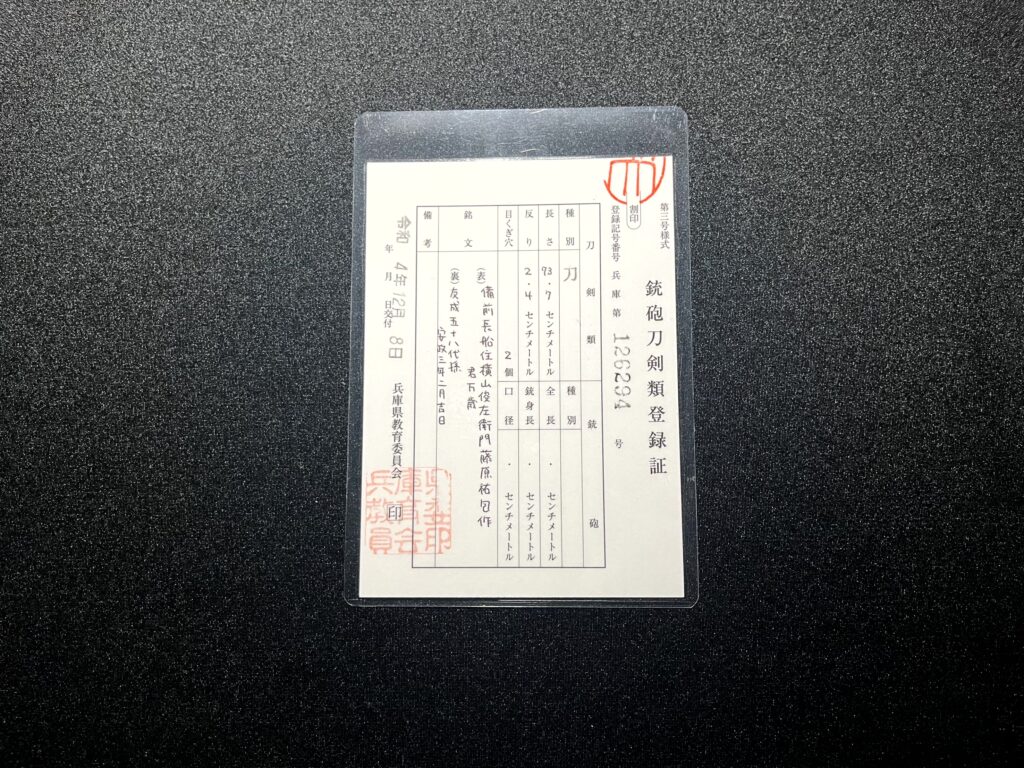
All Real Katanas are officially registered with the Board of Education of the prefecture in which they are located, and each comes with a registration certificate. This Katana also comes with its registration certificate, as shown in the attached image.
The original certificate must be returned to the Board of Education prior to export, but we will provide a copy of the certificate along with your purchase.
Each part of the Katana
1. Toshin(刀身)
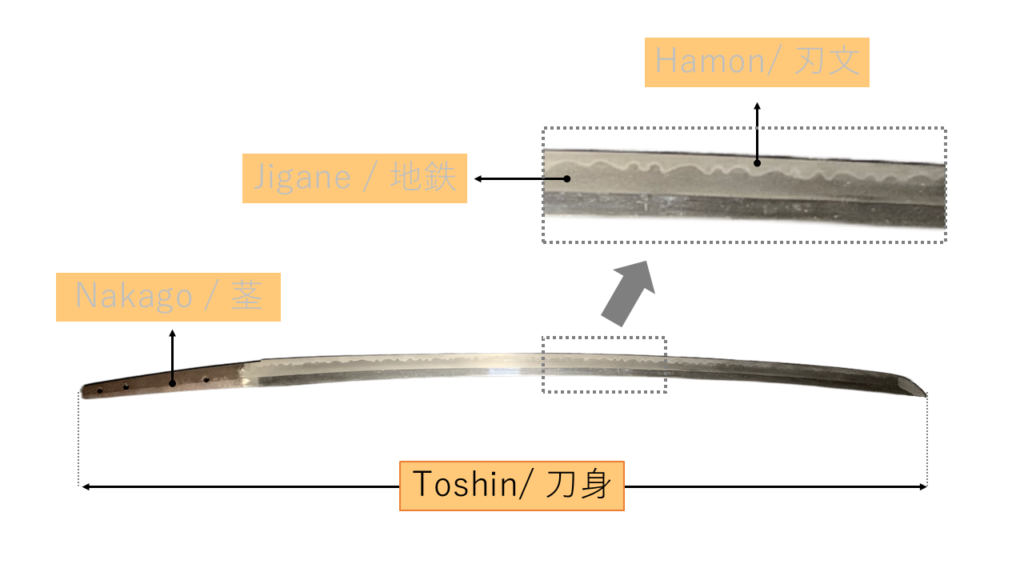
The Toshin refers to the entire blade of the Katana.
When evaluating a Katana, the blade’s length—and particularly its sori (curvature)—is a key point of appreciation.
The sori is what enables the Japanese sword to remain unbreakable and unbendable, while also allowing it to cut through objects with remarkable efficiency and minimal force.
If you’re interested in the scientific background of this, we explain the theory in detail in the following article:
Curved for a Reason: The Hidden Function of Authentic Katana’s Shape
【Toshin of This Katana】
Overall Length : 92.6cm
Blade Length (Nagasa): 73.7cm
Width at Base (Motohaba) : 3.2cm
Thickness at Base (Motokasane) : 0.7cm
Weight : 0.8kg
Curvature (Sori): 2.4cm
2. Hamon(刃文)
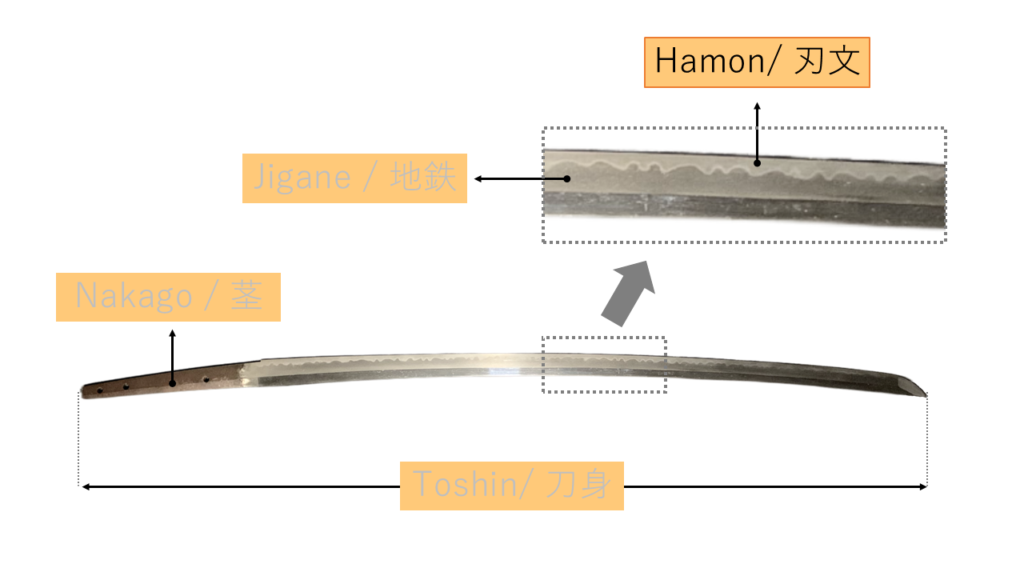
The Hamon is a white, wave-like pattern that appears along the edge of an authentic Katana blade.
There are two primary types of Hamon: the straight-line Suguha, and the more irregular, wavy Midareba.
While these can be further classified into many subtypes, the Hamon is a key element in sword appraisal, as it reflects the unique characteristics and techniques of the swordsmith.
It’s also one of the most visually enjoyable features of a Katana, making it fun to choose a blade based on the Hamon that resonates with you.
【Hamon of This katana】
3. Jigane(地鉄)
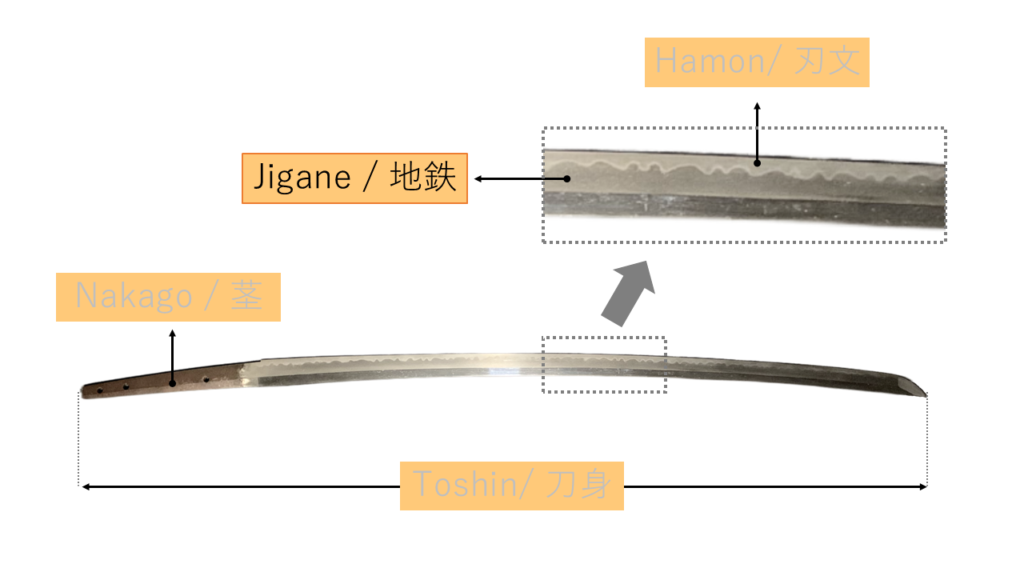
Jigane refers to the intricate surface patterns that appear on the blade of a Katana.
These patterns are created when tamahagane—steel made from iron sand, the raw material—is repeatedly folded and forged.
Each Katana reveals a unique Jigane pattern, offering a window into the artistry and technique of its maker.
【Jigane of This Katana】
4. Nakago(茎)
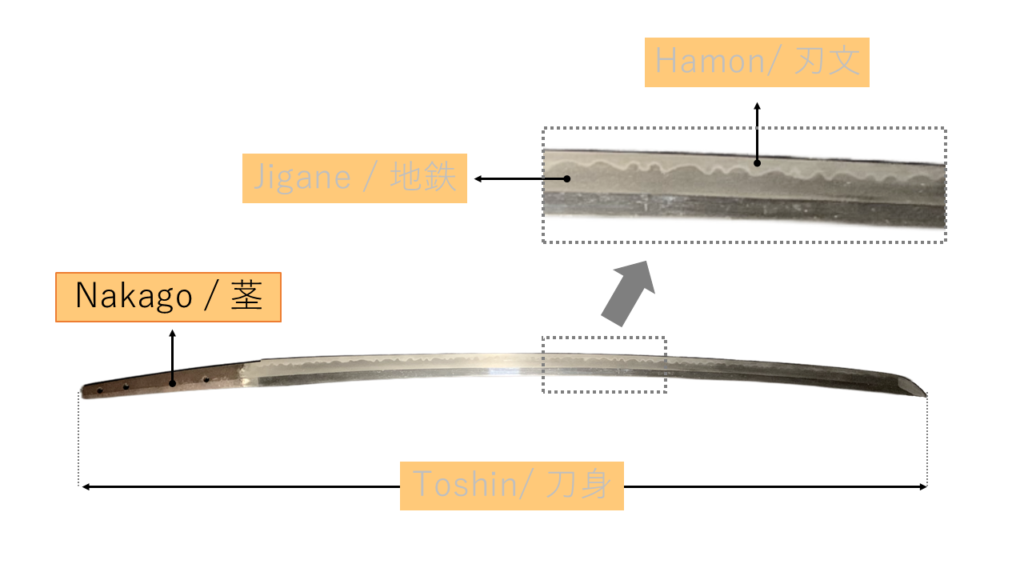
The Nakago is the tang of the Katana—the part of the blade that extends into the handle.
It often bears a mei (銘), or signature, which may include the name of the swordsmith and the date of its creation.
【Nakago of This Katana】
About Bizen Osafune Ju Yokoyama Toshisaemon Fujiwara Sukekane
1. Overview
Yokoyama Sukekane was a prominent Bizen swordsmith of the Shinshinto (Late Edo) period.
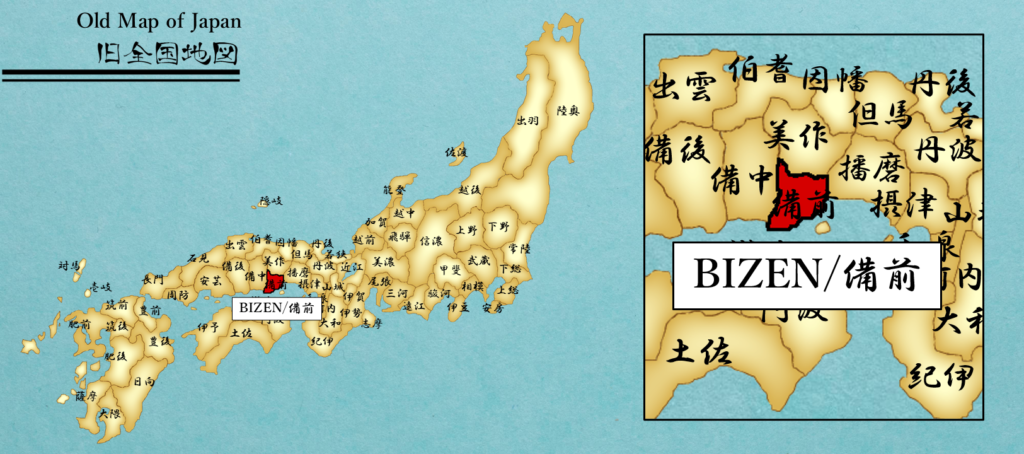
He was the 13th-generation successor of Bizen Sukesada (祐定) and the 58th descendant of Tomonari (友成), a legendary swordsmith of the Koto era. Sukekane was born in Fukuda Village (now part of Bizen City) as the second son of Kichiroubei Moritoki (守時吉郎兵衛).
2. Genealogy of Bizen Osafune Ju Yokoyama Toshisaemon Fujiwara Sukekane
Tomonari is regarded as one of the most distinguished swordsmiths of the Ko-Bizen (古備前) school. Together with Sanjo Kokaji Munechika (三条小鍛冶宗近) and Yasutsuna (安綱), he is considered one of the three great master swordsmiths in Japanese history. He is also recognized as the founder of the Bizen swordsmith tradition, and the originator of the Osafune school.
The deep connection between Yokoyama Sukekane and Tomonari is clearly inscribed in the Mei (signature engraving) on the blade.
3. Characteristics of This Katana
The inscription (Mei) on the tang is clearly engraved as follows:
“Bizen Osafune Ju Yokoyama Toshisaemon Fujiwara Sukekane Saku Kimi Banzai” (備前長船住横山俊左衛門藤原祐包作 君万歳)
This means:
“Made by Yokoyama Toshisaemon Fujiwara Sukekane, resident of Osafune in Bizen. May the lord live forever.”
The phrase “Kimi Banzai” is a celebratory inscription wishing for the owner’s good health, long life, the prosperity of descendants, enduring military fortune, and protection from evil.
Another inscription reads:
“Tomonari Gojuhachidaimago Ansei Sannen Nigatsu Kichijitsu” (友成五十八代孫 安政三年二月吉日)
This translates to:
“58th-generation descendant of Tomonari. Auspicious day in February, Ansei 3 (1856).”
This Mei is particularly fascinating. Not only does it include the smith’s commonly known name, “Yokoyama Toshisaemon Fujiwara Sukekane”, rather than just “Sukekane,” but it also includes an auspicious phrase (Kimi Banzai), making this sword exceptionally rare and symbolically meaningful.
From the Gokaden Lineage: Bizen-den Roots
Many Japanese swords trace their roots back to one or more of the five major traditional schools of swordsmithing, known as the Gokaden(五箇伝).

These five traditions—Yamato, Yamashiro, Bizen, Soshu, and Mino—each developed in different historical provinces and are known for their distinct styles and characteristics.
This sword is rooted in the Bizen-den(備前伝) tradition.
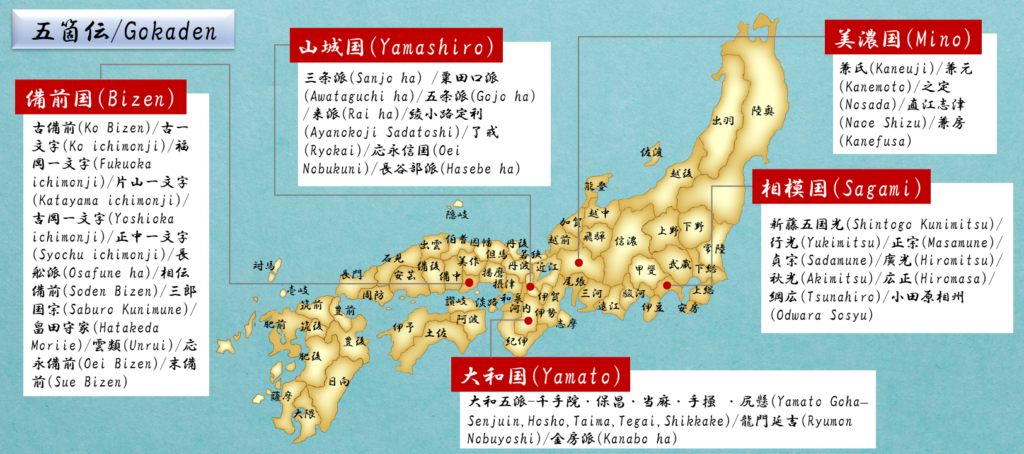
Bizen-den flourished in Bizen Province (present-day eastern Okayama Prefecture) from the late Heian period through the Muromachi period.
During the Kamakura and Nanbokucho periods in particular, Bizen swordsmiths dominated the field, producing blades that combined both exceptional quantity and outstanding quality, making Bizen a uniquely influential center of sword-making.
The region was blessed with high-quality iron sand and ideal water sources, creating perfect conditions for forging and tempering. As a result, countless famous swords were born in this area.
Bizen swords are known for their elegant curvature, refined balance, and especially their beautiful and often elaborate Hamon. They were widely appreciated by both samurai and commoners, blending aesthetic appeal with practical function.
Collectors value Bizen-den swords for their graceful beauty, reliable craftsmanship, and significant historical role—a combination that makes them enduring favorites across centuries.
Buyer’s Guife
Authentic Katanas are limited in number, and we hope each one finds its way to a collector who truly appreciates its value.
Before making a purchase, please take a moment to review our [Buyer’s Guide] for important information.
Shipping Information
1.Time Required for Delivery
This is a truly domestic Japanese sword that has never left Japan.
In order to export it overseas, we must obtain an official export permit from the Agency for Cultural Affairs of Japan.
It typically takes around 25 business days from the time of payment until the export process begins.

After shipment, delivery usually takes 7 to 20 days, depending on the destination country.
2.Shipping Charges
Shipping is free of charge.
We offer international shipping to most countries, with the exception of China and Russia.
3.Regarding Imports
Please check with your local customs office regarding regulations on importing Japanese swords.
We are not responsible for delays, rejections, or seizures by customs in the destination country.
For more details, please refer to our dedicated [Shipping Information] page.
Payment
To ensure a secure and respectful purchasing process, we currently accept bank transfers only.
As each katana is a legally registered cultural asset—not a weapon—we prioritize direct communication with buyers. This allows us to confirm intent, provide details, and build trust before completing any transaction.
Our approach reflects our deep respect for the historical and artistic value of Japanese swords and our commitment to responsible international sales.
For more details, please refer to our dedicated [Payment] page.
Frequently Asked Questions (FAQ)
If you have further questions, feel free to contact us directly.
Do you ship internationally?
Yes, we ship authentic Japanese swords worldwide. Even if we do not have a delivery record to your country, we will do our best to arrange secure delivery.
Currently we do not ship to China or Russia.
Is shipping really free?
Yes. All listed prices include complimentary international shipping. No additional delivery fees will be charged.
How long will it take to receive my sword?
Because we must obtain export approval from Japan’s Agency for Cultural Affairs, it takes about 25 business days to begin shipping. Including transit time, please allow 1–2 months for delivery.
For more details, please refer to our Shipping Information.
Are the swords already exported items?
No. Every sword we offer has remained in Japan since its creation and is being exported for the first time.
Are the swords legally exported?
Absolutely. We follow all Japanese regulations and obtain official export permits before shipment.
For more details, please refer to our Legal Status of Japanese Swords.
Do I have to pay customs duties or taxes?
Import duties or taxes may be levied by your country’s customs authority. Buyers are responsible for any such charges. For example, in France, approximately 20% import tax may apply. We recommend checking with your local customs office in advance.
Can I return a sword after purchase?
Returns and exchanges will not be accepted unless agreed upon between the Company and the User.
How do you select the swords you sell?
Our team consists of Katana enthusiasts with backgrounds in metallurgy and history.
We participate multiple times each month in exclusive local auctions in Japan, open only to certified Katana professionals. From these auctions, we carefully select and acquire truly valuable Katanas. Our collection features authentic pieces that are rarely found in ordinary shops.
How can I trust that the sword is real?
We conduct thorough, detailed analyses of every aspect of each Katana. While registration papers and certificates issued by various institutions can serve as one reference point, they do not necessarily guarantee authenticity.
Our stance on what we consider to be “Real” is explained in the article below — we invite you to take a look.
Are these swords actually sharp and functional?
Yes. Our swords are authentic Japanese katana forged by traditional methods and possess a level of sharpness that has been revered for centuries. They are not decorative replicas—they are real blades capable of cutting. Please handle with the utmost care to avoid injury or damage.
I’m looking for something specific. Can I request it?
Certainly. Please contact us with your requirements—design, smith, school, era, condition—and we will be happy to assist.

